#helsinki hoc 2
Text
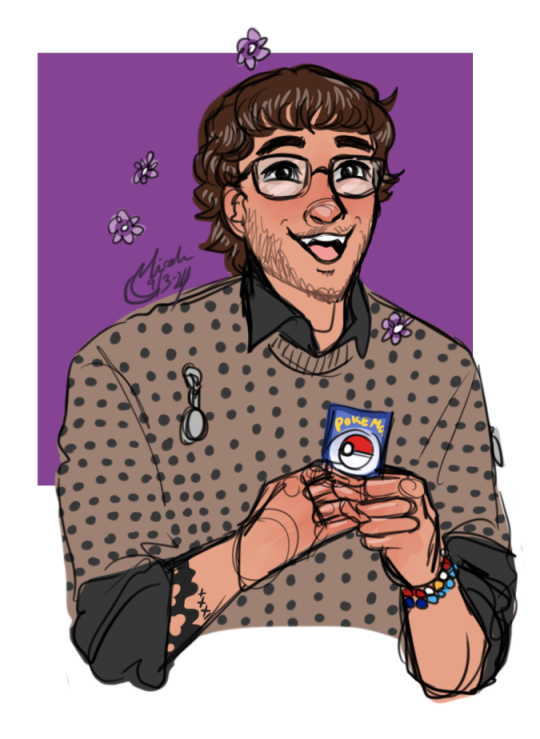

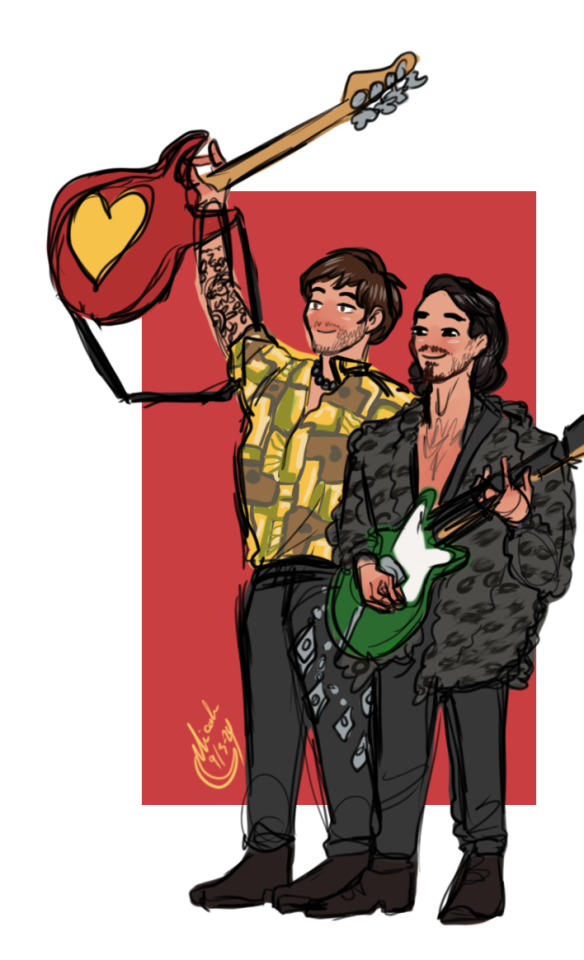

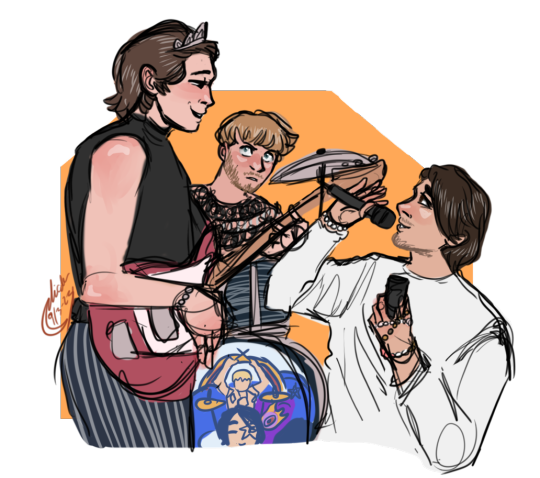

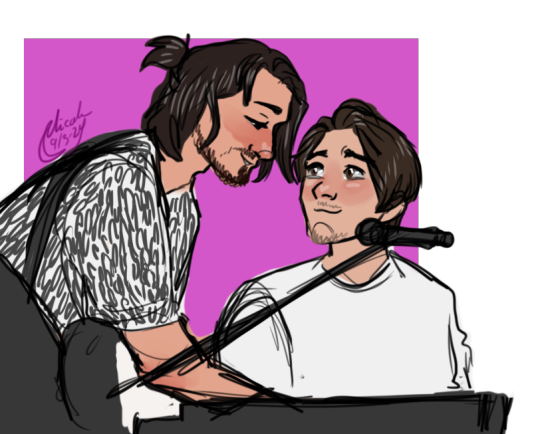

Joker Out in Helsinki sketches; SyS tour 03.02-03.03 2024
#maybe I went a bit too wild with this one x'D#I basically just found all those little moments I liked yet wasn't sure I could make something big out of#hope you like the silly little doodles :3#jure maček#jan peteh#bojan cvjetićanin#kris guštin#nace jordan#joker out#sys tour#jo see you soon tour 2024#joker out spring tour 2024#my gig#helsinki hoc 1#helsinki hoc 2#mine#my own art
151 notes
·
View notes
Text
March 3 2024
Second day in Finland and the second Joker Out concert. Today I went as häärijä, yellow suit and everything. It became the source of many gender euphoria moments given the compliments people threw my way. Some even said they thought I was the real deal from behind. Others wanted photos and autographs (signed as Dojan – the Danish häärijä). Evn Bojan ‘puppy eyes’ Cvjetićanin held eye contact with me for 5 second smiling and nodding (my stomach dropped hard).
#transgender#transmasc#nonbinary#joker out#häärijä#cosplay#gender euphoria#gender affirmation#bojan cvjeticanin#sys tour 2024#helsinki hoc 2#jo see you soon tour 2024#joker out spring tour 2024#findngmicah
20 notes
·
View notes
Text
Sinh viên Việt Nam khi du học Phần Lan nên học ngành gì?
“Sinh viên Việt Nam khi du học Phần Lan nên học ngành gì” luôn là câu hỏi và mối quan tâm của nhiều bạn sinh viên và gia đình. Phần Lan với nền giáo dục tiên tiến hàng đầu thế giới sẽ là bước đệm chắp cánh cho ước mơ của mỗi bạn sinh viên. Dù lựa chọn ngành hoc nào thì mỗi bạn sinh viên đều có cơ hội việc làm rộng mở, mức thu nhập xứng đáng với năng lực. Hãy cùng tìm hiểu những ngành học hot nhất tại Phần Lan để có thêm cho bản thân những lựa chọn tốt nhất.
Du học Phần Lan ngành kinh tế
Nhóm ngành lý tưởng cho du học sinh
Kinh doanh – Kinh tế luôn là ngành học hot được nhiều người ưu tiên lựa chọn khi đi du học và với Phần Lan cũng vậy. Forbes đã xếp quốc gia này vào top 15 nước có nền kinh tế phát triển mạnh. Đặc biệt đối với việc kinh doanh các sản phẩm về kỹ thuật, viễn thông, điện tử.
Thủ đô Helsinki là nơi đem đến cơ hội việc làm rất lớn cho các chuyên viên ưu tú bởi đây là quốc gia đứng top 3 thế giới về môi trường khởi nghiệp. Những ưu điểm này cùng nền giáo dục danh tiếng bậc nhất đã giúp Phần Lan trở thành điểm đến lý tưởng với các du học sinh du học Phần Lan ngành kinh tế.
Khối ngành Kỹ thuật
Nhóm ngành nên được các sinh viên cân nhắc
Khối ngành Kỹ thuật tai các trường đại học Phần Lan cũng là sự lựa chọn nên được các sinh viên cân nhắc. Tại đây, các du học sinh sẽ được tiếp cận với nền kỹ thuật tiên tiến bậc nhất và tiếp thu kiến thức từ giáo trình lẫn thực tiễn sôi động. Theo Game Developers Conference – GDC, đây cũng là quốc gia có môi trường vô cùng lý tưởng với sự phát triển của chuyên viên lập trình game. Với tốc độ tăng trưởng lên đến 260% giai đoạn 2013 – 2015, mỗi ngày xứ sở Ngàn hồ cho ra đời hơn 600 tựa game.
Bên cạnh đó, Phần Lan cũng đang phát triển đa dạng chuyên ngành Kỹ thuật khác như điện tử, công nghệ thông tin, cơ khí,… Điều đó đã giúp ích rất tốt cho nền giáo dục nâng cao năng lực từ th��c tế cùng với sự khan hiếm nhân lực đã giúp cơ hội việc làm tăng cao. Trang Jobstreet cũng xếp khối ngành này vào top 5 ngành có triển vọng phát triển mạnh mẽ trong tương lai.
Khối ngành Điều dưỡng
Nhóm ngành “khát” nhân lực tại Phần Lan
Theo Explorehealthcareers.org, khối ngành Điều dưỡng là một trong những ngành ngành có triển vọng việc làm hấp dẫn nhất thế giới. Số liệu thống kê từ năm 2014 đến nay của Cục Thống kê Lao động Mỹ cho biết nhu cầu nhân lực ngành Điều dưỡng đã tăng 16% so với những năm trước. Đây là ngành cực “khát” nhân lực có trình độ cao tại Phần Lan. Chính vì vậy, Chính phủ nơi đây luôn có những chính sách hấp dẫn nhằm thu hút và bồi dưỡng nhân tài trên khắp thế giới
Với ngành học này, sinh viên Việt Nam sẽ được theo học từ 3,5 đến 4,5 năm tuỳ vào từng chuyên ngành và từng trường khác nhau. Kết thúc chương trình học, sinh viên cần ở công tác tại Phần Lan từ 1- 2 năm. Đây không những là cơ hội mà còn là tiền đề quan trong cho những ai có mong muốn được cấp thẻ xanh.
Khối ngành Du lịch – Nhà hàng – Khách sạn
Nhóm ngành phát triển mạnh mẽ
Phần Lan là một quốc gia Bắc Âu nổi tiếng và thủ đô Helsinki được đánh giá là một trong ba 3 thành phố đáng sống nhất thế giới. Phong cảnh nơi đây đem đến cho du khách những ấn tượng vô cùng đặc biệt với ngàn hồ thơ mộng và nhiều di tích lịch sử nổi tiếng. Bên cạnh đó, tới Phần Lan còn bạn có thể chiêm ngưỡng cực quang nổi tiếng và trải nghiệm lễ hội Giáng sinh đầy thú vị, độc đáo tại quê hương ông già Bắc cực.
Điều đó cũng là một trong những nguyên nhân giúp ngành Du lịch- Nhà hàng- Khách sạn phát triển mạnh và luôn thiếu nhân lực có chuyên môn. Du học tại Phần Lan, du học sinh sẽ có cơ hội phát triển mạnh mẽ nhờ chương trình giảng dạy chuyên sâu kết hợp với thực tiễn. Điều đó giúp sinh viên được trang bị đầy đủ kiến thức, kĩ năng để có thể phát triển trong tương lai.
Những lưu ý cho sinh viên Việt Nam khi chọn ngành học tại Phần Lan
Lưu ý khi chọn ngành học tại Phần Lan
Đầu tiên, để có thể đăng ký xét tuyển tại các trường đại học Phần Lan bạn cần vượt qua bài thi SAT. Yêu cầu về điểm SAT cũng như bài kiểm tra đầu vào của mỗi chuyên ngành và mỗi trường sẽ khác nhau.
Thứ hai, tại Phần Lan Chính phủ luôn có những kiểm định nghiêm ngặt về chất lượng giáo dục với tất cả các trường đại học. Chính bởi vậy dù lựa chọn ngành học nào, trường nào thì sinh viên cũng hoàn toàn có thể yên tâm về chất lượng đào tạo.
Cuối cùng, các nhóm ngành đào tạo trên đều là những thế mạnh và là ngành thiếu nhân lực có trình độ chuyên môn tại Phần Lan. Chính vì vậy khi lựa chọn những ngành này sinh viên hoàn toàn có thể tối ưu hóa cơ hội việc làm.
Trên đây là những thông tin giúp bạn trả lời câu hỏi sinh viên Việt Nam du học Phần Lan nên học ngành gì. Dù lựa chọn lĩnh vực nào thì bạn cũng cần không ngừng học tập, rèn luyện kĩ năng bởi các nhà tuyển dụng sẽ không bao giờ từ chối chuyên viên ưu tú.
The post Sinh viên Việt Nam khi du học Phần Lan nên học ngành gì? appeared first on Du Học Osi Việt Nam.
source https://duhocosi.com/sinh-vien-viet-nam-nen-chon-nganh-gi-khi-du-hoc-phan-lan/
0 notes
Link
Người Phần Lan tận hưởng mùa hè ấm áp mà ngắn ngủi tại thủ đô Helsinki – Ảnh: REUTERS
Tuy nhiên, văn hóa giao tiếp cùng khí hậu khắc nghiệt dễ gây trầm cảm cho du học sinh vùng nhiệt đới.
Hơn 18 tháng trải nghiệm, Lê Ngọc Mỹ Tiên, 24 tuổi, hiện du học ngành Marketing và Kinh doanh quốc tế tại ĐH Haaga-Helia (gần thủ đô Helsinki, Phần Lan) chia sẻ việc chuẩn bị tâm lý trước không khí buồn tẻ và tính cách hướng nội ở quốc gia này.
Cảm giác như bị cô lập
Những bông tuyết đầu tiên xuất hiện từ tháng 10, tháng 12 mặt hồ đóng băng, đầu năm mới có nơi lạnh đến âm 45oC, ngày ngắn đêm dài, nhiều ngày liền không thấy Mặt trời… Kiểu khí hậu này ảnh hưởng nhiều đến tâm lí và thói quen sinh hoạt của người dân.
"Phần Lan hơi buồn tẻ so với các nước nhiệt đới và châu Mỹ. Người dân ở đây hầu như không ra đường, không có hàng quán ăn vặt hay thói quen lê la vỉa hè", Mỹ Tiên chia sẻ.
"Tiết trời quá lạnh, người dân thích ở nhà chơi game hoặc nói chuyện với gia đình. Bù lại, mùa hè kéo dài gần 4 tháng là thời điểm diễn ra nhiều lễ hội ngoài trời, trở thành dịp kết bạn dễ nhất trong năm, lòng người có vẻ cởi mở hơn".
"Khi ở Việt Nam thấy mùa đông tuyết trắng rất đẹp, lãng mạn nhưng sống lâu dễ bị trầm cảm", Tiên tâm sự.
"Nỗi nhớ nhà, nhớ bạn bè du học sinh nào cũng gặp nhưng ở Phần Lan cảm giác càng khó kết bạn mới. Tính cách người bản xứ hướng nội cao, cực kì tôn trọng không gian cá nhân, trên đường phố đã ít người mà họ còn đi rất xa nhau, cảm giác rất khó gần, tưởng chừng mình bị cô lập.
Dù vậy, khi đã là bạn, người Phần Lan rất nhiệt tình, cứ gọi điện mời đến nhà chơi bời, nấu ăn, hỏi thăm sức khỏe".
Mỹ Tiên tham quan và nghe thuyết trình về nguồn gốc nguyên liệu tại công ty thực phẩm Fazer (Phần Lan) gần 130 tuổi – Ảnh: NVCC
Sinh viên du học đa phần bận tâm chuyện làm thêm, tuy nhiên, Phần Lan không phải là nơi có nhu cầu cao về việc làm. Theo Tiên, mùa hè ở các thành phố lớn mới cần nhân viên làm bán thời gian, ở các thị trấn nhỏ hầu như không treo biển tuyển dụng.
Ngoài ra, các cửa hàng ưu tiên chọn sinh viên nói được tiếng địa phương, nếu không sinh viên phải nhận việc rửa chén, lau dọn, giao thư, phục vụ nhà hàng… ít đòi hỏi giao tiếp.
Từng học ở Kokkola – thị trấn nhỏ phía tây đất nước, nhưng do định hướng kinh doanh – marketing, Tiên viết đơn trình bày nguyện vọng chuyển trường vào thành phố để rèn luyện trong môi trường năng động hơn.
Học không quan trọng điểm số
Tiên cho biết bản chất người Phần Lan không coi trọng điểm số nên bằng tốt nghiệp không ghi học lực hay điểm trung bình.
"Đạt điểm cao rất khó, xuất sắc lắm mới được 4 điểm, phải thần kì, thiên tài mới chạm điểm 5. Tổng điểm được tính từ nhiều cột điểm thành phần do bạn bè, doanh nghiệp đối tác, thầy cô đánh giá dựa trên kỹ năng tương tác, làm việc nhóm của sinh viên đó", Tiên nói.
Do các trường tự chủ nên chương trình dạy đôi chỗ khác nhau. Tại trường cũ, Tiên học theo tín chỉ, qua trường mới học theo module, như học kỳ vừa qua sinh viên không học từng môn mà thực hiện ba dự án thực tế.
Sinh viên làm nhiều dự án thực tế gắn với doanh nghiệp để đảm bảo kiến thức trong học kỳ – Ảnh: NVCC
Trong dự án 1, sinh viên dành một tuần đến doanh nghiệp để quan sát, đặt câu hỏi không chỉ về quy trình làm việc mà còn mối quan hệ đồng nghiệp, từ đó so sánh thực tế khác lý thuyết đến mức độ nào. Cuối tuần đó, sinh viên sẽ nộp bản báo cáo, phân tích công ty cho giảng viên.
Trong dự án 2, sinh viên có một ngày đi thăm nhiều công ty, nghe đại diện doanh nghiệp chia sẻ về ngành kinh doanh, thậm chí báo cáo tài chính công khai.
Trong dự án 3, sinh viên chia nhóm làm việc trong tháng để tìm ra giải pháp cho một vấn đề thực tế từ công ty. Qua dự án, sinh viên vừa học vừa làm, công ty vừa đón nhận ý tưởng mới vừa duy trì mối quan hệ tốt với đại học – khu vực chuyên thực hiện các nghiên cứu khoa học cho doanh nghiệp.
Gần hai năm học tập, Mỹ Tiên mắt thấy tai nghe về trình độ thạc sĩ bắt buộc đối với giáo viên Phần Lan (chưa kể phải trải qua nhiều vòng thi, duyệt, đào tạo của Bộ giáo dục).
Nhưng ngạc nhiên hơn, trái với tính cách hướng nội, ngại giao tiếp, lớp học Phần Lan khuyến khích học sinh, sinh viên nêu ý kiến cá nhân, phát triển kỹ năng mềm, tư duy sáng tạo, tăng cường tương tác nhóm.
Để không bị sốc môi trường, Tiên cho rằng học sinh sinh viên cần xác định ngành học, phong cách học (nghiên cứu hay ứng dụng, nhàn rỗi hay năng động), từ đó chọn trường học tương ứng là thành phố trung tâm hay tỉnh lẻ.
"Trong thời gian học, du học sinh phải rèn thêm ngoại ngữ nếu muốn ở lại Phần Lan làm việc. Ở châu Âu nói chung, việc biết 6 ngôn ngữ là chuyện bình thường, mặc dù tiếng Anh phổ thông nhưng nhà tuyển dụng vẫn ưa tiếng địa phương hơn", Tiên cho biết.
"Nếu xác định làm công ty quốc tế chỉ sử dụng tiếng Anh thì họ đòi hỏi chuyên môn cực kỳ xuất sắc".
Du học, coi chừng không được công nhận bằng cấp
TTO – Tốt nghiệp các chương trình du học ngắn ngày hoặc đào tạo từ xa, nhiều người ngã ngửa khi bằng cấp của mình không được công nhận.
tuoitre.vn du học
The post Cẩn thận trầm cảm khi du học Phần Lan appeared first on Tin tức.
0 notes
Text

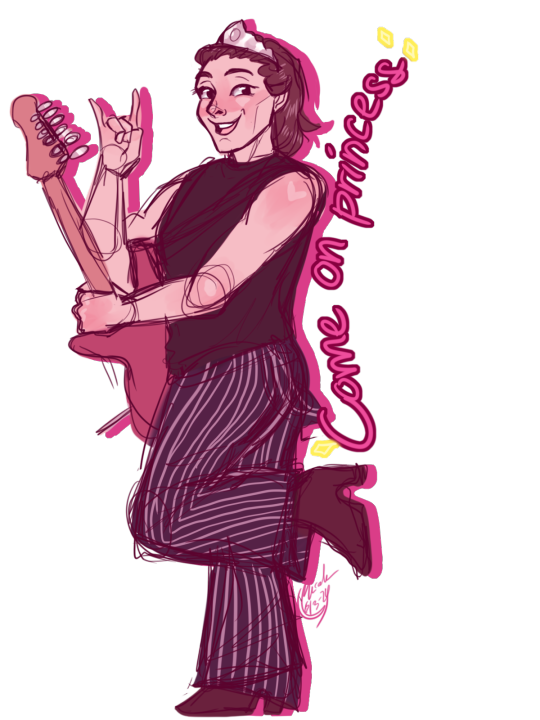
Little Kristo from Helsinki 3.3.24 :3
#I have collected a few references from the two helsinki gigs to draw because I am still mentally there x'D#and this moment is just so precious to me :'D#kris guštin#joker out#jo see you soon tour 2024#joker out spring tour 2024#my gig#helsinki hoc 2#mine#my own art
73 notes
·
View notes
Text
March 25 2024
Today I finally edited my transgender vlog. To nobody’s surprise it turned into 90% joker out concert footage. Hearing myself scream along on camera is sort of odd. I mean, it doesn’t necessarily sound bad all the time: I just sound silly singing half gibberish when I don’t know the Slovenian lyrics by heart. Good thing I don’t have voice dysphoria otherwise this editing process would have been a nightmare. I mostly just smile at myself while getting lost in the good memories (take me back!!!).
#transgender#transmasc#nonbinary#joker out#sys tour 2024#joker out spring tour 2024#jo see you soon tour 2024#helsinki hoc 1#helsinki hoc 2#malmö gig#gothenburg gig#göteborg gig#my gig#late entry#entry#findingmicah
2 notes
·
View notes
Text
The impact of onabotulinumtoxinA on severe headache days: PREEMPT 56-week pooled analysis
The impact of onabotulinumtoxinA on severe headache days: PREEMPT 56-week pooled analysis:
Abstract
Background
OnabotulinumtoxinA has been shown to reduce headache-days among patients with chronic migraine (CM). The objective of this analysis was to determine whether onabotulinumtoxinA has an impact on headache-day severity in patients with CM among those patients who were deemed non-responders based on reduction in the frequency of headache days alone.
Methods
Data from the Phase 3 REsearch Evaluating Migraine Prophylaxis Therapy (PREEMPT) clinical trial program (a 24-week, 2-treatment cycle, double-blind, randomized, placebo-controlled, parallel-group phase, followed by a 32-week, 3-treatment cycle, open-label phase) were pooled for analysis. Patients kept a daily diary to record headache severity on a 4-point scale (from none to severe), and a 6-domain Headache Impact Test (HIT-6) was used to determine the clinical impact of headaches. Analysis was undertaken to assess whether the subset of patients that were headache-day frequency non-responders at week 24 (patients with <50% reduction in headache-day frequency) experienced a reduction in headache severity whilst receiving onabotulinumtoxinA.
Results
For headache-day frequency non-responders, significant reductions in the number of severe headache days, average daily headache severity, pooled percentage of severe headache days and headache severity score were observed at week 24 for patients who had received onabotulinumtoxinA compared with those who had received placebo. The between-group differences were reduced and non-significant at week 56. Similarly, headache-day frequency non-responders receiving onabotulinumtoxinA were found to have an improvement in the clinical impact of headaches using results from the HIT-6.
Conclusions
These results suggest that even those patients with CM who are deemed non-responders based on analysis of headache frequency alone experience clinically meaningful relief from headache intensity following treatment with onabotulinumtoxinA.
Keywords
Chronic migraine OnabotulinumtoxinA Headache severity Hit-6 PREEMPT
Background
Chronic migraine (CM; ≥15 headache days per month for ≥3 consecutive months and with ≥8 days/month of migraine-type headaches) [1] is associated with significant personal, societal, and economic burdens [2, 3, 4, 5]. Compared with people with episodic migraine (EM; <15 headache days per month), those with CM experience greater headache intensity, increased pain severity and disability, [2] higher rates of comorbid medical conditions, [2, 4] reduced health-related quality of life, [2] greater economic burden, [6] and reduced productivity. [3, 6].
The Phase 3 REsearch Evaluating Migraine Prophylaxis Therapy (PREEMPT) clinical trial program established the safety and efficacy of onabotulinumtoxinA for CM [7, 8, 9, 10]. In PREEMPT 1 and 2, patients were randomized to double-blind treatment with onabotulinumtoxinA or placebo (24 weeks), followed by open-label treatment with onabotulinumtoxinA (32 weeks) [7, 8, 9, 10]. Treatment with onabotulinumtoxinA resulted in significant improvements in a variety of efficacy endpoints, including the change in frequency of headache days throughout the double-blind treatment period [10]. Nevertheless, anecdotal reports from treating clinicians have indicated that results from these trials do not fully reflect the patient benefits that are observed in clinical practice. Specifically, it has been suggested that onabotulinumtoxinA treatment may have an impact on other clinical characteristics such as headache-day severity.
In this analysis, we assessed the effect of onabotulinumtoxinA on headache-day severity in patients with CM using pooled data from the PREEMPT clinical trials. Our analysis placed a particular focus on the effect on patients who did not experience a clinically meaningful reduction in the frequency of headache days.
Methods
Study details have been reported previously, [7, 8] and will be only summarized here.
Study design
Briefly, PREEMPT 1 was conducted at 56 North American sites from January 2006 to July 2008 and PREEMPT 2 was conducted at 50 North American and 16 European sites from February 2006 to August 2008. The studies consisted of a 28-day baseline screening phase, followed by two 12-week treatment cycles over a 24-week randomized, double-blind, placebo-controlled phase (2 treatment cycles), and then a 32-week open-label phase in which all patients received onabotulinumtoxinA (3 treatment cycles).
The PREEMPT clinical trial program was conducted in accordance with the Declaration of Helsinki and Good Clinical Practice guidelines and was approved by an Independent Ethics Committee. All patients provided written informed consent prior to participation in the clinical trial (ClinicalTrials.gov identifiers: NCT00156910 and NCT00168428).
This post-hoc analysis reports pooled results of both PREEMPT 1 and PREEMPT 2 including data from the double-blind and open-label phases of the trials (a total of 56 weeks).
Study participants
Men and women were eligible for inclusion if they had a history of migraine and met the International Classification of Headache Disorders (2nd edition; [ICHD-2]) migraine diagnostic criteria, with ≥15 headache days per month (headache day was defined as a calendar day with ≥4 continuous hours of headache), of which ≥50% were considered migraine-type headache days. Patients were excluded from the study if they were experiencing continuous headaches, had taken headache prophylaxis in the 4 weeks before enrollment into the study or they had previously been treated with a botulinum toxin.
Study treatment
Patients were randomized (1:1 in blocks of 4, stratified by frequency of acute pain medication use during the 28-day baseline period) [7, 8] to receive either onabotulinumtoxinA (155 U) or placebo for the first 2 treatment cycles. Therapy was administered via intramuscular injection in fixed dosages at 31 fixed-sites across 7 specific head and neck muscle areas. Up to 40 additional units of onabotulinumtoxinA could be administered according to a “follow the pain” strategy, up to a total dosage of 195 U per treatment cycle administered in up to 39 anatomical sites.
Assessment of outcome measures
A patient daily telephone diary was kept using an interactive voice response system for the duration of the studies including the 28-day baseline screening period. Headache-day severity was collected on a daily basis via the patient diary and assessed every 4 weeks.
In the PREEMPT trials, pooled safety analyses were undertaken for all patients who received at least one dose of onabotulinumtoxinA or placebo.
Headache-day severity
In accordance with guidance for controlled trials, [11] the degree of headache severity was rated on a 4-point scale to indicate severe (3), moderate (2) or mild (1), or headache-free (0). The severity of headache days was determined by the maximum severity across all the headache reports for the day. For headaches that lasted >1 calendar day, the reported level of headache severity was applied to each day that the headache lasted for any given headache report. Diary days that were either without any reported headache or with a reported headache of <4 h continuous duration were defined as headache-free days.
Headache-day severity outcomes assessed the change from the baseline period in the number of days with severe headache (as assessed from patient dairies per 28-day period), pooled number of severe headache days (defined as the sum of severe headache days reported across all patients during the previous 28-day period), and the severity responder analysis. A severity responder was defined as a patient who achieved a ≥ 1-grade improvement in average daily headache severity (ADHS) score across the assessment period (e.g., a reduction in headache severity from severe to moderate).
Headache-day severity outcomes were then assessed among those patients who were considered headache-day frequency “non-responders”. Headache-day frequency non-responders were defined as patients with <50% reduction in headache-day frequency from the 28-day baseline screening period to week 24, as defined by the number of patient diary-reported days per 28-day period with ≥4 continuous hours of headache.
The 6-Item Headache Impact Test (HIT-6), [12, 13] a 6-domain internet-based survey, was used to assess the impact of headaches on the patient. Response options for each of the 6 questions were: never (scored as 6), rarely (8), sometimes (10), very often (11), and always (13), giving a total possible score of between 36 and 78. If ≥50% of the questions were answered, the total score was extrapolated from the mean score across answered questions. If <50% of the questions were answered, the score was set to missing.
Using the HIT-6 outcomes, patient response was analyzed. Patients who had an improvement in headache severity from baseline (≥1-grade improvement in severity from baseline) and an improvement in their HIT-6 score of ≥5 points were considered to be “responders”, as a reduction in HIT-6 scores of ≥5 points from baseline has previously been defined as clinically meaningful [14, 15].
Statistical analyses
Headache-day severity
We assessed the change from baseline in the number of severe headache days. Missing counts were estimated using modified last observation carried forward (mLOCF) techniques. P-values for between-treatment comparisons were calculated using covariate analysis of variance (ANCOVA), with baseline values as the covariate. The main effects in the ANCOVA included treatment and medication-overuse strata, where the type III sum of squares was used.
Statistics were calculated for the number of severe headache days pooled across patients for each time period. Any missing time period data for a patient were estimated using mLOCF. Between-treatment comparisons of the percentage of severe headache days were determined by Pearson’s chi-square or Fisher’s exact tests (for this parameter and for others discussed below, if ≥25% of the expected cell counts were <5) for each headache-day severity category.
ADHS scores were the average severity score, as assessed by the patient, across all reported diary days, weighted to account for headache days without severity report and rounded to the nearest whole number. Improvement of ≥1 grade in ADHS (e.g. from severe to moderate) included patients with score reduction of at least 1. Statistics were calculated for the change from the baseline severity score. Missing values were estimated using mLOCF. Between-treatment comparisons of the percentage of patients with ≥1-grade improvement in ADHS were determined by Pearson’s chi-square or Fisher’s exact tests.
HIT-6 responder analysis
Similarly, statistics were calculated for baseline and change from baseline for HIT-6 scores to categorize HIT-6 responders, defined as patients with ≥5-point improvement in HIT-6 scores from baseline. For various time periods in the subset of headache-day frequency non-responders, whose headaches had reduced in severity by at least 1 grade by week 24, between-treatment comparisons of HIT-6 responders were determined by Pearson’s chi-square or Fisher’s exact tests.
Results
Patient disposition and demographics
A total of 1384 patients received either onabotulinumtoxinA (n = 688) or placebo (n = 696) in the 24-week double-blind phase before receiving onabotulinumtoxinA in the open label phase. Baseline demographic and clinical characteristics were similar between the two overall treatment groups (Table 1). The mean patient age at baseline was 41 years, and the mean duration since the onset of CM was 19 years. More than 85% of the patients in both groups were female and more than 60% of patients were using prophylactic medications for migraine prior to enrollment into the study. Patient discontinuation across the 56-week study was 25.4% and 29.3% for the onabotulinumtoxinA and placebo study arms, respectively, with no major differences in the reasons for withdrawal from the study (Fig. 1).
Table 1
Baseline demographic and clinical characteristics for overall PREEMPT group and the non-responder subgroupa
Characteristic
Overall PREEMPT Group
Non-Responder Subgroup
O/O (n = 688)
P/O (n = 696)
P-valueb
O/O (n = 285)
P/O (n = 360)
P-valueb
Mean (SD) age, y
41.1 (10.4)
41.5 (10.7)
0.58
42.3 (10.4)
42.8 (10.5)
0.56
Age ≥ 40 y, n (%)
395 (57.4)
408 (58.6)
0.65
179 (62.8)
224 (62.2.)
0.94
Sex, n (%)
Female
603 (87.6)
593 (85.2)
0.19
242 (84.9)
309 (85.8)
0.74
Race/Ethnicity, n (%)
0.60
0.40
White
617 (89.7)
630 (90.5)
257 (90.2)
333 (92.5)
Black
34 (4.9)
40 (5.7)
15 (5.3)
17 (4.7)
Hispanic
27 (3.9)
19 (2.7)
9 (3.2)
9 (2.5)
Other
10 (1.5)
7 (1.0)
4 (1.4)
1 (0.3)
Mean (SD) age of onset of CM, y
21.2 (11.0)
21.9 (11.9)
0.46
21.3 (11.4)
22.5 (12.1)
0.19
Mean (SD) CM duration, y
19.4 (12.4)
19.0 (12.7)
0.49
20.4 (12.2)
19.7 (12.8)
0.46
Mean (SD) headache days (≥4 h) per 28-day period
19.9 (3.7)
19.8 (3.7)
0.52
20.5 (3.9)
20.4 (4.0)
0.61
Prestudy headache prophylactic use, n (%)
425 (61.8)
454 (65.2)
0.18
197 (69.1)
263 (73.1)
0.29
Acute headache medicine overuse, n (%)
446 (64.8)
460 (66.1)
0.62
195 (68.4)
251 (69.7)
0.73
Mean (SD) HIT-6 scorec
65.5 (4.1)
65.4 (4.3)
0.64
65.4 (3.8)
65.3 (4.4)
0.84
Patients with severe headache impact
(HIT-6 total score ≥ 60), %c
93.5
92.7
0.57
93.7
92.8
0.75
Mean (SD) MSQ scored
Role restrictive
38.5 (16.6)
38.7 (17.3)
0.97
37.9 (16.7)
38.4 (17.5)
0.67
Role preventive
56.0 (21.2)
56.1 (21.7)
0.83
57.0 (21.9)
56.1 (21.7)
0.62
Emotional functioning
42.1 (24.1)
42.4 (25.0)
0.81
42.7 (23.6)
44.6 (24.7)
0.31
CM chronic migraine, HIT-6 6-item Headache Impact Test, MSQ Migraine-Specific Quality of Life Questionnaire, O/OonabotulinumtoxinA in double-blind phase and open-label phase, P/O placebo in double-blind phase and onabotulinumtoxinA in open-label phase, PREEMPT Phase 3 REsearch Evaluating Migraine Prophylaxis Therapy
aNonresponder group = <50% reduction in headache-day frequency at week 24
b P-values are the pairwise t-test or the Fisher’s exact test between the O/O vs the P/O groups for each respective population group
cHIT-6 scores of 36–49 indicate little or no impact; 50–55, some impact; 56–59, substantial impact; 60–78, severe impact
dMSQ v2.1 scores range from 0 (poor) to 100 (good)
Fig. 1
Patient Disposition. Reproduced with permission from Aurora, et al. Headache 2011;51:1358–73
Of the 645 patients that were classified as non-responders at week 24 (i.e. had <50% reduction in headache-day frequency), 285 patients had received onabotulinumtoxinA and 360 patients had received placebo. There were no statistically significant differences in the baseline demographic and clinical characteristics between the 2 non-responder groups (Table 1). The non-responder groups were also largely similar to the overall population; although a slightly higher percentage of the non-responders used prophylactic medications at baseline.
Changes in headache severity in headache-day frequency non-responders
Among those with a less than 50% reduction from baseline in headache-day frequency at week 24 (headache-day frequency non-responders), reduction from baseline in the number of severe headache days per 28-day period was significantly greater when treated with onabotulinumtoxinA compared with placebo throughout the 24-week double-blind period (Fig. 2). These between-group differences decreased and were no longer significant in the open-label phase of the study.
Fig. 2
Change from baseline in the number of severe headache days per 28-day period, among nonresponders.*P ≤ 0.001. †P < 0.05
In addition, in headache-day frequency non-responders, the percentage of severe headache days pooled across patients was significantly lower throughout the 24-week double-blind period for those treated with onabotulinumtoxinA than those receiving placebo (Fig. 3). These between-group differences decreased during the open-label phase of the trial when both groups of patients received onabotulinumtoxinA and the differences were no longer significant by week 40.
Fig. 3.
Pooled number of severe headache days, among nonresponders. *P ≤ 0.001. † P < 0.05
Patients who had at least a 1-grade improvement from baseline in the severity of their headaches based on patient diaries were considered to be severity responders. Among headache-day frequency non-responders, significant reductions in the severity of the headaches occurred more frequently in patients receiving onabotulinumtoxinA than in patients receiving placebo at week 24 (41.1% vs 31.4%; P = 0.011; Table 2). Once all patients were receiving onabotulinumtoxinA in the open-label phase of the trial, between-group differences disappeared and were not significant at week 56 (64.6% vs 65.6%; P = 0.792).
Table 2
Severity and HIT-6 Responder Analysis
Proportion of severity responders, among headache-day frequency non-responders a
OnabotulinumtoxinA/ OnabotulinumtoxinA n = 285
Placebo / OnabotulinumtoxinA n = 360
P-value
Week 24
41.1%
31.4%
0.011
Week 56
64.6%
65.6%
0.792
Proportion of HIT-6 responders, among severity responders b
OnabotulinumtoxinA/ OnabotulinumtoxinA n = 246
Placebo / OnabotulinumtoxinA n = 161
P-value
Week 24
62.2%
43.5%
<0.001
Week 56
74.4%
72.0%
0.601
HIT-6 6-item Headache Impact Test
aPatients with severity response (≥1-grade improvement from baseline in severity), among patients with <50% reduction from baseline in headache-day frequency at week 24
bPatients with a HIT-6 response (≥5-point improvement from baseline), among patients with ≥1-grade reduction from baseline in headache-day severity at week 24
Analysis based on HIT-6 scores
Separate analysis was undertaken to assess whether HIT-6 scores demonstrated a positive response to treatment (≥5-point increase in HIT-6 scores from baseline, as has previously been deemed to be a positive response to treatment [14, 15]) in patients whose headaches reduced in severity (≥1 grade change in severity). The results were similar to those reported above. At week 24, HIT-6 responder rates were significantly higher for onabotulinumtoxinA than for placebo (62.2% vs 43.5%; P < 0.001), and at week 56, the response rates were similar between treatment groups (74.4% vs 72.0%; P = 0.601; Table 2).
Safety
The results of the PREEMPT trials previously published confirmed that onabotulinumtoxinA is safe and well tolerated for the long-term prophylactic treatment of CM [9]. Treatment-related adverse events (TRAEs) were consistent with the known safety profile of onabotulinumtoxinA. In the double- blind phase of the study, neck pain (6.7%), muscular weakness (5.5%), eyelid ptosis (3.3%), injection-site pain (3.2%), headache (2.9%), myalgia (2.6%), musculoskeletal stiffness (2.3%), and musculoskeletal pain (2.2%) were reported by ≥2% of patients receiving onabotulinumtoxinA. TRAE decreased in the open-label phase of the study with neck pain (4.6%), muscular weakness (3.9%), eyelid ptosis (2.5%), muscle tightness (2.2%) and injection site pain (2.0%) the only TRAEs occurring in ≥2% of patients. Serious TRAEs were rare occurring in 1 patient (0.1%) in both the double-blind and open-label phases of the PREEMPT trials.
Discussion
In an earlier analysis of the PREEMPT data, it was observed that 49% of patients treated with onabotulinumtoxinA demonstrated a ≥ 50% reduction in headache-day frequency after 1 treatment cycle, and an additional 11% who did not respond after the first treatment cycle responded after treatment cycle 2 [16]. In the current analysis, we present data for the effect of onabotulinumtoxinA on headache-day severity among those with CM who did not have a reduction in headache-day frequency after two cycles of treatment (non-responders defined as <50% reduction in headache-day frequency at week 24). During the randomized, placebo-controlled, double-blind phase, patients treated with onabotulinumtoxinA demonstrated a greater reduction from baseline in the number of severe headache days per 28-day period than did those receiving placebo. In addition, compared with the placebo group, there were a lower percentage of patients receiving onabotulinumtoxinA with an ADHS score of severe, a lower percentage of severe headache days pooled across all patients within the onabotulinumtoxinA group, and a higher rate of at least 1-grade improvement in headache severity from baseline (severity responders). Among all severity responders, the proportion of HIT-6 responders (≥5-point improvement from baseline) was greater for the onabotulinumtoxinA group than the placebo group at the end of the double-blind phase.
The headache-day severity endpoints showed a noteworthy peak at week 24 in both onabotulinumtoxinA and placebo treatment groups. The key reason for this non-response peak is the selection criteria, since the population of interest was predefined as those without adequate treatment response in relation to headache-day frequency at week 24. It is interesting that in this group of non-responders, there was some response at other time points both before the arbitrary 24-week non-response point and after that time point.
Open-label results where both groups were receiving onabotulinumtoxinA generally demonstrated lesser between-group differences, with no significant differences between the groups observed by the end of the 56-week study. Conversely, headache-day frequency, as previously reported by Aurora et al., [9] was significantly reduced by onabotulinumtoxinA in the double-blind phase and continued to show between-group differences through to week 56, making a case for early treatment with onabotulinumtoxinA in patients with CM. This observation suggests that treatment with onabotulinumtoxinA produces significant reduction in headache-day severity that may compliment a reduction in headache-day frequency, since onabotulinumtoxinA treatment in the open-label phase was able to eliminate between-group differences in severity, but not frequency. These findings are worthy of further investigation to fully understand the potential therapeutic benefit of early treatment with onabotulinumtoxinA.
Importantly, the current analysis demonstrated reduced headache-day severity at the first post-baseline assessment (week 4) in patients who were headache-day frequency non-responders at week 24, suggesting an important clinical response to treatment not captured by the measure of headache-day frequency reduction. Furthermore, the alignment of the HIT-6 response with the severity response suggests that the reduction in headache-day severity of at least 1 grade was clinically meaningful. Further study is required to determine whether this clinical response translates into a reduction in healthcare resource utilization and broader economic benefits.
The large number of patients with CM included in these double-blind placebo-controlled studies makes these results particularly robust. The use of the voice interactive daily telephone diary encouraged high patient compliance with diary record keeping and captured data without the need for reliance on long-term recall. This would be expected to result in more accurate capture of patient data, as others have shown that current health status can have an impact upon a patient’s recollection of the past [17].
The study is not without its limitations. The lack of an active comparator is a potential limitation. However, the lack of any approved prophylactic treatment for CM makes it difficult to identify an appropriate comparator. The time point to determine headache-day frequency nonresponse was set at week 24, which was an arbitrary time point. The selection of a different time point for the definition of non-response may have resulted in different outcomes. Further clinical trials may be required to understand if a different time point for the determination of headache-day frequency non-response has any clinically meaningful impact on the interpretation of the data presented here.
Similarly, no optimal responder rate for the reduction from baseline in headache-day frequency has been defined for the CM population. Although both 30% and 50% cutoffs for headache measures have been suggested to be clinically meaningful, [11] a 50% cutoff is more commonly used in migraine studies, and provided the rationale for the definition of non-responders for the current analysis. Analysis of the current data using a <30% reduction in headache-day frequency as the definition for non-response produced similar results to those reported here, with those classified as non-responders achieving a significant reduction in headache severity (Additional file 1: Table S1, and Figures S1 and S2). This additional analysis using <30% as the cutoff further strengthens the findings of this analysis.
The International Headache Society has published guidelines for clinical trial assessment of prophylactic treatment for CM, including guidelines on the selection of outcome measures [11]. The primary end-point outcomes recommended by these international experts include headache days with moderate or severe intensity, migraine days, or frequency of migraine episodes. However, despite this international accord on the selection of outcome measures to encourage robust clinical trials, the outcomes may not fully align with the patient’s expectation of therapy. This study demonstrates that frequency day response alone may not be sufficient to determine a clinically meaningful response to therapy, and highlights the need for further work on developing key patient-endorsed outcome measures for the assessment of prophylactic treatment of chronic migraine in particular and headache disorders in general.
Conclusions
Patients from the PREEMPT clinical trial program who received onabotulinumtoxinA and met our definition for headache-day frequency non-response (<50% reduction in headache-day frequency at week 24) demonstrated significantly reduced headache-day severity (compared with those receiving placebo). Among those who showed reduced headache-day severity, onabotulinumtoxinA also produced greater reduction in headache impact scores. These results suggest that patients with CM experience clinically meaningful relief from headache intensity following treatment with onabotulinumtoxinA, even among those who may not experience a clinically meaningful reduction in the frequency of their headaches.
Abbreviations
ADHS:
Average daily headache severity
ANCOVA:
Analysis of covariance
CM:
Chronic migraine
HIT-6:
6-Item Headache impact test
ICHD-2 :
International classification of headache disorders (2nd Edition)
mLOCF:
Modified last observation carried forward
PREEMPT:
Phase 3 REsearch Evaluating Migraine Prophylaxis Therapy
TRAE:
Treatment-related adverse event
Declarations
Acknowledgments
Editorial support for development of this manuscript was provided by Amanda Kelly, MPhil, MSHN, and Lee Hohaia, PharmD, of Complete Healthcare Communications. LLC (Chadds Ford, PA), a CHC Group company, and funded by Allergan plc (Dublin, Ireland). All authors met the ICMJE authorship criteria. Neither honoraria nor payments were made for authorship.
Funding
Allergan plc (Dublin, Ireland) funded the study.
Availability of data and materials
The dataset supporting the conclusions of this article are available at http://ift.tt/PmpYKN. NCT00156910 http://ift.tt/2vmTDOG (registered Sept 7, 2005; enrollment of first patient Feb 2006) NCT00168428 http://ift.tt/2tYgtc1 (registered Sept 12, 2005; enrollment of first patient Mar 2006).
Authors’ contributions
Drs. Matharu, Halker, Pozo-Rosich, Manack Adams, and Aurora made substantial contributions to conception and design, or acquisition of data, or analysis and interpretation of data. All authors have been involved in drafting the manuscript or revising it critically for important intellectual content. All authors have given final approval of the version to be published. Each author has participated sufficiently in the work to take public responsibility for appropriate portions of the content.
Dr. Matharu has agreed to be accountable for all aspects of the work in ensuring that questions related to the accuracy or integrity of any part of the work are appropriately investigated and resolved.
Competing interests
Dr. Matharu has received consulting fees/honoraria from Allergan plc, Saint Jude Medical, Medtronic and electroCore. Dr. Halker has received honoraria from Medlink Neurology, New England Journal of Medicine Journal Watch Neurology, and Current Neurology and Neuroscience Reports. Dr. Pozo-Rosich has received consulting fees/honoraria from Allergan plc. Mr. DeGryse and Dr. Manack Adams are employees of Allergan plc and may own stock in the company. Dr. Aurora is a full-time employee of Lilly and has received consulting fees/honoraria from Allergan plc, eNeura, Merck, and Teva and speaker’s bureau participation for Allergan plc.
Publisher’s Note
Springer Nature remains neutral with regard to jurisdictional claims in published maps and institutional affiliations.
Open AccessThis article is distributed under the terms of the Creative Commons Attribution 4.0 International License (http://ift.tt/1iwynXF), which permits unrestricted use, distribution, and reproduction in any medium, provided you give appropriate credit to the original author(s) and the source, provide a link to the Creative Commons license, and indicate if changes were made.
Additional files
The impact of onabotulinumtoxinA on severe headache days: PREEMPT 56-week pooled analysis
0views
0shares
0downloads
Supplementary Table
. Percentage of patients
with a measurable change in
headache severity among patients with <
30% reduction in headache
-day
frequency.
Patients with severity response (≥1
-
grade improvement from baseline in
severity
based on patient diary)
OnabotulinumtoxinA
/
OnabotulinumtoxinA
n
=
194
Placebo /
OnabotulinumtoxinA
n
=
261
P
-
value
Week 24
24.2%
13.8%
0.0
04
Week 56
54.1%
57.9%
0.428
Supplementary Figure 1
. Change from baseline in the number of severe headache
days per 28-
da
y period, among patients with <3
0% reduction in headache
-day
frequency
.
*
P
<0.001,
†
P
<0.05.
†
4
8
12
16
20
24
28
32
36
40
44
48
52
56
-4
-3
-2
-1
01
Mean Change from Baseline in Num ber of
Severe Headache Days Per 28-Day Period
W eek
Placebo/OnabotA (N=261)
OnabotA/OnabotA (N=194)
*
*
*
†
†
Double-Blind Phase
Open-Label Phase
Supplementary
Figure 2. Percentage of severe headache days, pooled across
patients with <30% reduction in headache
-day frequency
.
*
P
<0.001,
†
P
<0.05
.
04
8
12
16
20
24
28
32
36
40
44
48
52
56
010
20
30
40
50
Percent of Severe Headache Days
Across Patients, %
W eek
Placebo/OnabotA (N=261)
OnabotA/OnabotA (N=194)
*
*
*
*
*
*
*
†
†
Double-Blind Phase
Open-Label Phase
†
†
figshare
ShareDownload
Additional file 1: Table S1. Percentage of patients with a measurable change in headache severity among patients with <30% reduction in headache-day frequency. Figure S1. Change from baseline in the number of severe headache days per 28-day period, among patients with <30% reduction in headache-day frequency. *P<0.001, †P<0.05. Figure S2. Percentage of severe headache days, pooled across patients with <30% reduction in headache-day frequency. *P<0.001, †P<0.05. (PDF 35 kb)
References
Headache Classification Committee of the International Headache Society (2013) The international classification of headache disorders, 3rd edition (beta version). Cephalalgia 33:629–808. doi:http://ift.tt/2tYGho2View ArticleGoogle Scholar
Blumenfeld AM, Varon SF, Wilcox TK, Buse DC, Kawata AK, Manack A, Goadsby PJ, Lipton RB (2011) Disability, HRQoL and resource use among chronic and episodic migraineurs: results from the international burden of migraine study (IBMS). Cephalalgia 31:301–315. doi:http://ift.tt/2tYBq6AView ArticlePubMedGoogle Scholar
Bigal ME, Serrano D, Reed M, Lipton RB (2008) Chronic migraine in the population: burden, diagnosis, and satisfaction with treatment. Neurology 71:559–566. doi:http://ift.tt/2vmMEVUView ArticlePubMedGoogle Scholar
Buse DC, Manack Adams A, Serrano D, Turkel C, Lipton RB (2010) Sociodemographic and comorbidity profiles of chronic migraine and episodic migraine sufferers. J Neurol Neurosurg Psychiatry 81:428–432. doi:http://ift.tt/2tYGgR0View ArticlePubMedGoogle Scholar
Manack Adams A, Serrano D, Buse DC, Reed ML, Marske V, Fanning KM, Lipton RB (2015) The impact of chronic migraine: the chronic migraine epidemiology and outcomes (CaMEO) study methods and baseline results. Cephalalgia 35:563–578. doi:http://ift.tt/2vmSvdVView ArticleGoogle Scholar
Munakata J, Hazard E, Serrano D, Klingman D, Rupnow MF, Tierce J, Reed M, Lipton RB (2009) Economic burden of transformed migraine: results from the American migraine prevalence and prevention (AMPP) study. Headache 49:498–508. doi:http://ift.tt/2vnbmVYView ArticlePubMedGoogle Scholar
Aurora SK, Dodick DW, Turkel CC, DeGryse RE, Silberstein SD, Lipton RB, Diener HC, Brin MF (2010) OnabotulinumtoxinA for treatment of chronic migraine: results from the double-blind, randomized, placebo-controlled phase of the PREEMPT 1 trial. Cephalalgia 30:793–803. doi:http://ift.tt/2tYtfqWView ArticlePubMedGoogle Scholar
Diener HC, Dodick DW, Aurora SK, Turkel CC, DeGryse RE, Lipton RB, Silberstein SD, Brin MF (2010) OnabotulinumtoxinA for treatment of chronic migraine: results from the double-blind, randomized, placebo-controlled phase of the PREEMPT 2 trial. Cephalalgia 30:804–814. doi:http://ift.tt/2vmAT1AView ArticlePubMedGoogle Scholar
Aurora SK, Winner P, Freeman MC, Spierings EL, Heiring JO, DeGryse RE, VanDenburgh AM, Nolan ME, Turkel CC (2011) OnabotulinumtoxinA for treatment of chronic migraine: pooled analyses of the 56-week PREEMPT clinical program. Headache 51:1358–1373. doi:http://ift.tt/2tYCgQJView ArticlePubMedGoogle Scholar
Dodick DW, Turkel CC, DeGryse RE, Aurora SK, Silberstein SD, Lipton RB, Diener HC, Brin MF (2010) OnabotulinumtoxinA for treatment of chronic migraine: pooled results from the double-blind, randomized, placebo-controlled phases of the PREEMPT clinical program. Headache 50:921–936. doi:http://ift.tt/2vmUnTSView ArticlePubMedGoogle Scholar
Silberstein S, Tfelt-Hansen P, Dodick DW, Limmroth V, Lipton RB, Pascual J, Wang SJ (2008) Guidelines for controlled trials of prophylactic treatment of chronic migraine in adults. Cephalalgia 28:484–495. doi:http://ift.tt/2tYbEPHView ArticlePubMedGoogle Scholar
Kosinski M, Bayliss MS, Bjorner JB, Ware JE Jr, Garber WH, Batenhorst A, Cady R, Dahlof CG, Dowson A, Tepper S (2003) A six-item short-form survey for measuring headache impact: the HIT-6. Qual Life Res 12:963–974View ArticlePubMedGoogle Scholar
Yang M, Rendas-Baum R, Varon SF, Kosinski M (2011) Validation of the headache impact test (HIT-6) across episodic and chronic migraine. Cephalalgia 31:357–367. doi:http://ift.tt/2tYxbaUView ArticlePubMedPubMed CentralGoogle Scholar
Bayliss MS, Batenhorst A (2002) The HIT-6™: a user's guide USA. QualityMetric, Inc, Lincoln, RIGoogle Scholar
Lipton RB, Varon SF, Grosberg B, McAllister PJ, Freitag F, Aurora SK, Dodick DW, Silberstein SD, Diener HC, DeGryse RE, Nolan ME, Turkel CC (2011) OnabotulinumtoxinA improves quality of life and reduces impact of chronic migraine. Neurology 77:1465–1472. doi:http://ift.tt/2vmRTVzView ArticlePubMedGoogle Scholar
Silberstein SD, Dodick DW, Aurora SK, Diener HC, DeGryse RE, Lipton RB, Turkel CC (2015) Per cent of patients with chronic migraine who responded per onabotulinumtoxinA treatment cycle: PREEMPT. J Neurol Neurosurg Psychiatry 86:996–1001. doi:http://ift.tt/2tYdwYHView ArticlePubMedGoogle Scholar
McGlothlin AE, Lewis RJ (2014) Minimal clinically important difference: defining what really matters to patients. JAMA 312:1342–1343. doi:http://ift.tt/2vmPrP4View ArticlePubMedGoogle Scholar
Copyright
from OtoRhinoLaryngology - Alexandros G. Sfakianakis via Alexandros G.Sfakianakis on Inoreader http://ift.tt/2tYdxMf
0 notes
Text
Kinh nghiệm cách xin học bổng du học Phần Lan
Học bổng là một trong những cụm từ quá quen thuộc đối với những ai đang có ý định muốn đi du học. Để trở thành chủ nhân của những suất học bổng là niềm mơ ước của rất nhiều bạn sinh viên. Tuy nhiên, để làm được điều đó thì không hề dễ dàng một chút nào, đặc biệt là với những bạn trẻ không có kinh nghiệm. Dưới đây là bí quyết săn học bổng du học Phần Lan 2020.
Bí quyết săn học bổng du học Phần Lan 2020
Có thể nói, săn học bổng vô cùng khó khăn, vì thế những ai có đức tính kiên trì, nhẫn nại thì mới có thể làm được điều này. Để việc săn học bổng toàn phần Phần Lan trở nên thuận tiện và dễ dàng thì các bạn có thế áp dụng một số bí quyết:
1. Học ngoại ngữ
Muốn xin học bổng du học Phần Lan thành công thì điều đầu tiên bạn cần làm là xác định khả năng ngoại ngữ của bản thân. Cần trau dồi các kỹ năng nghe, nói ngoại ngữ để phục vụ cho việc giao tiếp. Có rất nhiều người chỉ vì kỹ năng nghe, nói ngoại ngữ kém mà không thể giành được học bổng như mong muốn.
Đầu tư thời gian trau dồi ngoại ngữ nếu muốn giành học bổng du học.
2. Tìm hiểu kỹ ngành nghề muốn học
Trước khi có ý định đi du học thì bạn nên tìm hiểu thật kỹ về ngành nghề muốn học. Bởi những trường, tổ chức xét duyệt sẽ dựa trên những điều kiện thực tế như độ hiểu biết của bạn, những kiến thức đã chuẩn bị trước đó. Vì vây, hãy trau dồi kiến thức cũng như tìm hiểu về xã hội, ngành nghề thì việc săn học bổng Phần Lan mới trở nên thuận lợi hơn.
3. Chọn nguồn thông tin du học uy tín
Chọn nguồn thông tin du học cũng là yếu tố ảnh hưởng không ít đến vấn đề săn học bổng du học Phần Lan. Với sự phát triển của thời đại công nghệ 4.0 như hiện nay, việc tìm kiếm đơn vị cung cấp học bổng sẽ không khó. Tuy nhiên, không phải đơn vị nào cũng uy tín và đảm bảo chất lượng. Vì vậy, bạn cần thận trọng, tìm hiểu kỹ để có lựa chọn chính xác nhất.
Chọn nguồn thông tin du học uy tín, đảm bảo chất lượng.
4. Hiểu rõ năng lực và giới hạn của bản thân
Thông qua những tiêu chí của đơn vị xét duyệt học bổng đưa ra, từ đó bạn phải hiểu rõ năng lực và giới hạn của bản thân mình. Bởi như vậy, bạn mới có thể lựa chọn được những học bổng phù hợp với khả năng của bản thân. Nếu nộp hồ sơ vào những học bổng có yêu cầu cao hơn khả năng của bạn thì cơ hội nhận học bổng là rất thấp.
Điều kiện để có thể xin học bổng du học Phần Lan
Đi du học bằng học bổng là một trong những hướng đi nhằm phát triển tư duy và trau dồi bản thân. Để xin được học bổng thì bạn cần đáp ứng một số điều kiện:
1. Hồ sơ ấn tượng
Một trong những điều kiện đầu tiên để săn học bổng chính là hồ sơ. Bạn cần chuẩn bị một bộ hồ sợ thật ấn tượng đối với nơi mà bạn đăng kí. Học bổng là niềm mơ ước của hàng nghìn sinh viên. Chính vì vậy, bạn phải thể hiện được sự đặc biệt, nổi bật của bản thân trong hồ sơ đăng ký.
Chuẩn bị hồ sơ ấn tượng.
2. Bài thi đạt chuẩn quốc tế
Các đơn vị xét duyệt học bổng du học Phần Lan sẽ dựa trên nhiều thang điểm cùng chương trình đào tạo khác nhau. Tùy vào từng quốc gia thì việc xét sẽ dựa trên bài thi chuẩn về IELTS hoặc TOEFL hay các bài thi về tư duy như SAT, GRE,… Do đó, bạn hãy cố gắng đạt thật nhiều điểm cao ở các bài thi chuẩn hóa.
3. Thư giới thiệu
Đây là tiêu chí tôi ưu rất quan trọng trong tất cả các điều kiện xin học bổng du học Phần Lan. Hãy vận dụng những mối quan hệ và lựa chọn những người có chức vụ cao để nhờ họ viết thư giới thiệu. Tuy nhiên, người đấy phải thực sự hiểu bạn. Bởi những đơn vị xét học bổng sẽ xác minh thông qua việc gọi điện hoặc gửi email.
Những trường có học bổng Phần Lan
Nhiều năm gần đây, Phần Lan đang dần trở thành địa điểm quen thuộc được rất nhiều sinh viên lựa chọn du học. Bởi chất lượng giáo dục cực tốt cùng với đó là những chính sách học phí ưu đãi. Dưới đây là top 5 trường đại học Phần Lan có học bổng:
Đại học Helsinki.
Đại học Aalto.
Đại học Oulu.
Đại học Đông Phần Lan.
Đại học Tampere.
Hồ sơ cần chuẩn bị những gì?
Như đã nói ở trên, hồ sơ là điều kiện vô cùng quan trọng ảnh hưởng không nhỏ đến kết quả xét duyệt học bổng. Bạn đang băn khoăn không biết chuẩn bị những gì cho hồ sơ xét duyệt học bổng Phần Lan? Một số loại giấy tờ cần thiết như:
Hộ chiếu hoặc chứng minh thư nhân dân (thẻ căn cước).
Học bạ THPT.
Chứng chỉ IELTS hoặc TOEFL iBT.
Bằng tốt nghiệp Đại học.
Thư giới thiệu.
Thư bày tỏ nguyện vọng.
Hồ sơ cần chuẩn bị những giấy tờ quan trọng.
Trên đây là kinh nghiệm xin học bổng du học Phần Lan mà chúng tôi muốn chia sẻ với các bạn. Hy vọng rằng bài viết trên sẽ giúp bạn có thêm bí quyết để có thể dễ dàng hơn trong việc săn học bổng.
The post Kinh nghiệm cách xin học bổng du học Phần Lan appeared first on Du Học Osi Việt Nam.
source https://duhocosi.com/kinh-nghiem-cach-xin-hoc-bong-du-hoc-phan-lan/
0 notes
Text
Himera-festivaali 2017
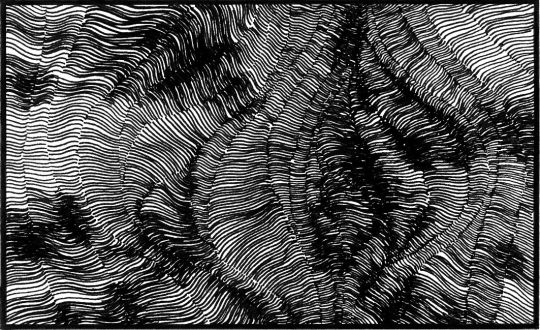
Perjantai 28.4., Kutomo, ovet klo 19:
19.30 IAX (Kuupuu, Lau Nau & Tsembla)
20.30 Louise D.E. Jensen (DK/US)
21.30 Valerio Tricoli (IT)
Lauantai 29.4., Sibelius-museo, klo 14:
14:00 Topias Tiheäsalo / Antti Tolvi
14:45 Louise D.E. Jensen (DK/US) / Natalia Castrillon (CO) / Amanda Blomqvist
Lauantai 29.4., Kutomo, ovet klo 19:
19.30 Arttu Partinen
20.15 F. Ampism (UK)
21.00 Tomoko Sauvage (JP/FR)
21.45 Francesco Cavaliere (IT)
Kutomon visuaalisesta puolesta vastaa Juha-Matti Hynynen ja Leah Beeferman (US).
Liput: 10€ / tapahtuma
Festivaalipassi: 20€ (sisältää molemmat illat Kutomolla sekä lauantain päiväkonsertin Sibelius-museolla)
Tapahtumapaikat:
Nykytaidetila Kutomo
Kalastajankatu 1 B
20100 Turku
Sibelius-museo
Piispankatu 17
20500 Turku
Himera-festivaali toteutetaan Turun kaupungin tuella.
///////////////////////////////////////////////////////////
Friday 28 April, Kutomo, 7 pm
19.30 IAX (Kuupuu, Lau Nau & Tsembla)
20.30 Louise D.E. Jensen (DK/US)
21.30 Valerio Tricoli (IT)
Saturday 29 April, Sibelius Museum, 2 pm:
14:00 Topias Tiheäsalo / Antti Tolvi
14:45 Louise D.E. Jensen (DK/US) / Natalia Castrillon (CO) / Amanda Blomqvist
Saturday 29 April, Kutomo, 7 pm:
19.30 Arttu Partinen
20.15 F. Ampism (UK)
21.00 Tomoko Sauvage (JP/FR)
21.45 Francesco Cavaliere (IT)
Installations at Kutomo by Juha-Matti Hynynen and Leah Beeferman (US)
Tickets: 10€ / event
Festival pass: 20€ (includes both nights at Kutomo and a Saturday afternoon concert at the Sibelius Museum)
Contemporary art space Kutomo
Kalastajankatu 1 B
20100 Turku
Sibelius Museum
Piispankatu 17
20500 Turku
The production is supported by the City of Turku.
///////////////////////////////////////////////////////////

Valerio Tricoli (IT)
Valerio Tricoli (Palermo, Italia, 1977) on elektroakustisen musiikin säveltäjä ja esittäjä.
Noin kymmenen vuoden ajan Tricoli on esiintynyt avokelanauhurin avulla, jota hän käyttää sekä äänittämiseen että äänen reaaliaikaiseen muokkaamiseen, editointiin ja miksaamiseen. Tärkeimpinä äänilähteinään Tricoli käyttää sekä ennalta tehtyjä että konserttipaikoilla syntyviä tallenteita: puhetta, laulua, pieniä akustisia ja elektronisia soittimia, esineitä ja esityspaikan akustiikkaa tai mahdollisten soittokumppanien tekemiä ääniä.
Tarinansa Tricoli luo kussakin soittohetkessä erikseen, ja niissä hän keskittyy todellisuuden, virtuaalisuuden ja muistin moninaisiin suhteisiin: äänet leijuvat aina konserttitilanteen “tässä ja nyt” -hetken sekä muistojen hämärän eri vyöhykkeillä - kaukaisina, mutta samalla läsnä olevina kuten deja-vu-kokemuksissa. Tricolin musiikissa on usein käsinkosketeltava hautovan jännityksen tunnelma, jatkuvuuden sijaan hän suosii murtumia ja käyttää isoa äänenvoimakkuuksien asteikkoa lähes hiljaisuudesta äärimmäisiin purkauksiin asti.
Tricolin elektroakustiset studiosävellykset ovat osa konkreettisen musiikin perinnettä, ja ne tutkivat ennen kaikkea sisäisen kokemuksen ja okkultismin teemoja. Näiden teemojen ja hänen paljon käyttämänsä puhutun tekstin myötä teokset ovat Tricolin omien sanojen mukaan syvän eksistentiaalisia, psykologisen, emotionaalisen ja irrationaalisen kauhun itsetutkiskeluja.
+
Valerio Tricoli (Palermo, Italy, 1977) is a composer and performer of electro-acoustic music.
Since the mid '00 is main instruments for live presentations is the Revox B77 reel-to-reel tape recorder, used as a completely analogue / ergonomic device for live sampling and real-time transformation / editing / mixing of pre-recorded (field or studio recordings) and made-on-the-spot sound sources, the latter usually being vocalizations (including speech and singing), small acoustic and electronic instruments, objects, the amplified sound of the room itself in which the concert takes place and - in the case of group sets - whatever is produced by the fellow musicians.
On a formal level his sets focus on the impromptu creation of a narrative which takes into account the multiple relations intervening between reality, virtuality and memory during the acoustic event: sounds are always hovering between the "here and now" of the concert situation and the shady domain of memory - distant but at the same time present like in a deja-vu experience. Privileging fracture over continuity and by the use of a dynamic range that could often jump suddenly from near-silence to extreme blasts of sounds, an almost tactile feeling of brooding tension is often attained.
His electro-acoustic studio compositions, documented on few records, are aligned to the tradition of Musique Concrète and explore themes of the internal - represented both by the psychological and the physical - and of the occult, which together with the large use of spoken text makes them often deeply existential works, self- investigations of the psychological, emotional and irrational horror within.
https://valeriotricoli.bandcamp.com/
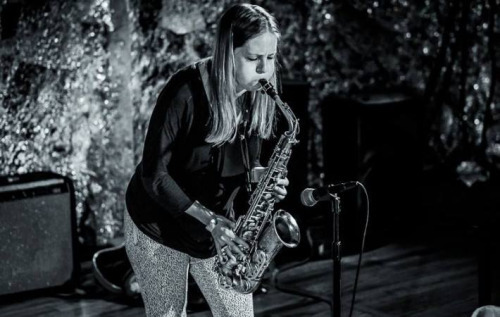
Louise D.E. Jensen (DK/US)
Louise Dam Eckardt Jensen (s. 1980) käyttää esiintymisissään ja sävellyksissään niin saksofonia kuin omaa ääntään. Antiautoritäärisyyden periaatteeseen nojaava improvisoija jakaa aikansa liki kuristavan New Yorkin sekä idyllisen tanskalaisen maaseutuelämän välillä.
Tämä kaksijakoisuus kuuluu myös hänen musiikissaan: raaka ja pidäkkeetön noise saa tasapainoiseksi kumppanikseen rauhallisesti etsiskelevää melodisuutta. Näitä etsintöjä hän on viime aikoina tehnyt mm. saksofonikvartetissa yhdessä Tamio Shiraishin, Matt Nelsonin ja Chris Pitsiokosin kanssa sekä hänen oman no wave -henkisen yhtyeensä Sweet Banditryn riveissä.
Yhdessä aviomiehensä, basisti Tom Blancarten kanssa hän soittaa The Home of Easy Credit -duossa, joka oli yksi ensimmäisistä Himera-esiintyjistä talvella 2013. Blancarten kanssa he New Yorkissa soittavat usein myös trumpetisti Peter Evansin kanssa. Tanskasta käsin pari puolestaan pyörittää yhdessä Marsken-levymerkkiään.
Himera-festivaalilla Louise D.E. Jensen soittaa kaksi konserttia: perjantai-iltana hän esiintyy soolona Kutomolla ja lauantai-iltapäivän konsertissa Sibelius-museolla hän puolestaan soittaa yhdessä Natalia Castrillonin (harppu) sekä Amanda Blomqvistin (lyömäsoittimet) kanssa.
+
Louise Dam Eckardt Jensen (b. 1980) is a Danish-American saxophonist, vocalist and composer whose anti-authoritarian approach has led to her to a sort of bi-coastal career where she thrives simultaneously in the dense and claustrophobic environment of New York City and the idyll of the southern Danish countryside.
This duality finds its counterpart in her music: equal parts raw, unrelenting exploration of harsh noise and questing melodic forays. Not prone to sit on the sidelines, she tends to lead or co-lead her own ensembles. She recently formed a hellish saxophone quartet comprised of legendary Japanese noise saxophonist Tamio Shiraishi, tenor saxophonist Matt Nelson (Battle Trance, Premature Burial) and young alto player Chris Pitsiokos (Weasel Walter). She is also the leader of, vocalist and composer for Danish improvised no-wave band Sweet Banditry (featuring Brandon Seabrook & Kevin Shea), the co-leader of eerie post-apocalyptic improv duo The Home of Easy Credit with husband Tom Blancarte, as well as a member of various ad-hoc improvising groups, including the Gauntlet Quartet with Peter Evans, Dan Peck and Tom Blancarte.
She has toured extensively throughout the continental United States and Europe and has performed with musicians as diverse as Weasel Walter, Marc Ducret, Jim Black, Tim Dahl, Erica Dicker and Poul Dissing. She co-runs the Denmark-based label Marsken Records with husband Tom Blancarte.

IAX
IAX on Jonna Karanka, Laura Naukkarinen ja Marja Johansson. Trio soittaa hengittävää elektroakustista musiikkia. Irtonaisena ripotellut äänet muodostavat lämpimän maiseman, jossa äänten alkuperä hämärtyy. Kudoksessa kuuluu kosketinsoittimia, analogisia syntetisaattoreita ja akustisia äänilähteitä.
+
IAX is Jonna Karanka, Laura Naukkarinen and Marja Johansson. The trio plays breathing electroacoustic music. Sparsely sprinkled, disjointed sounds create a warm horizon of sound, blurring the origins of the sound objects. The fabric is made up of elements such as keyboards, analog synthesizers and acoustic sound sources.
Kuva/Photo: Anna-Mari Nousiainen

Natalia Castrillón (CO)
Natalia Castrillón on Helsingissä asuva kolumbialainen harpisti. Hän soittaa useita eri soittimia konserttiharpuista eri kansanmusiikeissa käytettäviin harppuihin. Castrillón on työskennellyt monipuolisesti eri alojen taiteilijoiden kanssa kanssa teatterista tanssiin ja kuvataiteista kokeelliseen improvisoituun musiikkiin. Hän suorittaa parhaillaan musiikin maisterintutkintoa Sibelius-Akatemiassa.
+
Natalia Castrillón is harpist from Colombia interested in spreading and sharing the sound of the pedal and lever harp in any artistic manifestation. She has collaborated with artists from different backgrounds and disciplines such as theatre, dance, visual arts and experimental improvised music. Currently she carries out her Master's degree in Global Music at the Sibelius Academy in Helsinki,Finland.
Kuva/Photo: Paula Walker
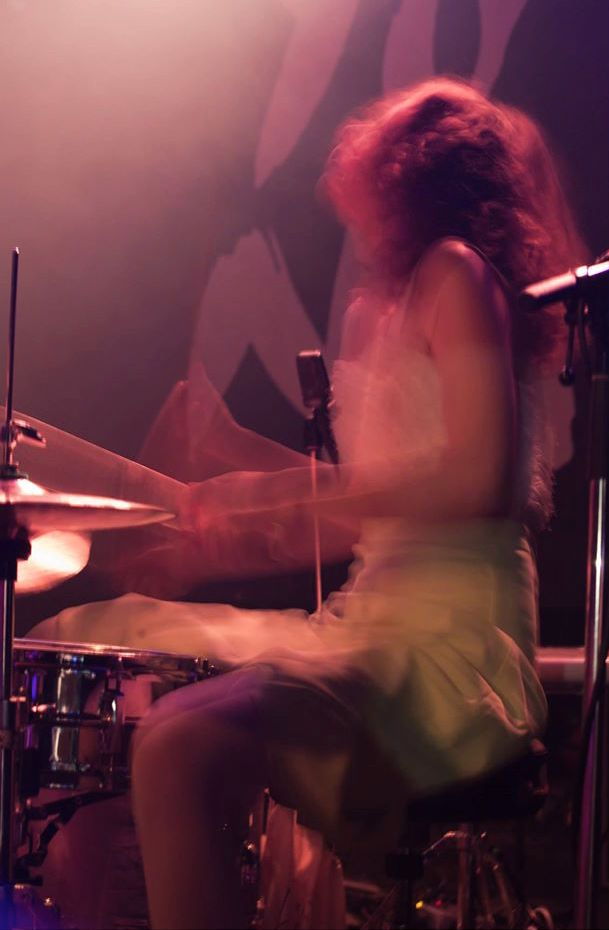
Amanda Blomqvist
Amanda Blomqvist on Helsingissä asuva ahvenanmaalainen rumpali. Amandan soitossa sekoittuvat niin megalomaaniset kompit kuin herkät pienet tekstuurit ja äänenvärit. Hän soittaa laajasti vapaan improvisaation kentällä sekä pop-yhtyeissä Frank Frank Frank ja Birdpeople.
+
Amanda Blomqvist is a Helsinki-based drummer, originally from Åland - an island between Finland and Sweden. Her playing combines megalomaniac beats with very fragile textures and timbres. She's active playing both freely improvised music and fresh pop music in groups such as Frank Frank Frank and Birdpeople.

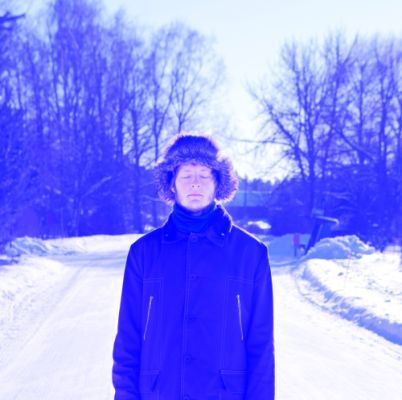
Topias Tiheäsalo – akustinen kitara / acoustic guitar
Antti Tolvi – tam-tam / gong
Kahden suomalaisen improvisoijan akustinen kohtaaminen Sibelius-museon rikkaassa akustiikassa.
Topias Tiheäsalo on Turussa asuva kitaristi ja improvisoija, joka on esiintynyt 2000-luvun alusta lähtien. Hänet tunnetaan pääasiassa akustisista, improvisoiduista sooloesiintymisistä: sävelet ja äänet saattavat olla hiljaisia ja harvassa, ne saattavat syntyä terävästi, jääden sitten kummittelemaan hauraina ylä-ääninä. Hän on myös kiinnostunut teräskielisen kitaran avoimista virityksistä ja niiden rikkaasta soinnista tavoilla, jotka tuovat mieleen moninaiset kitaraperinteet ympäri maailman. Sähkökitaraa hän soittaa mm. thrash metal/noise -bändi Pymathonissa sekä free jazz -yhtye Jooklo Quartetissa. Tiheäsalo säveltää musiikkia mykkäelokuvanäytöksiin sekä tekee ohjelmia Yle Radio 1:lle free jazzista, nykysävellyksestä ja vanhasta musiikista – hän perusti ystäviensä kanssa Himera-työryhmän reilut neljä vuotta sitten.
Kemiönsaarelainen säveltäjä, muusikko ja Qigong-opettaja Antti Tolvi on ollut yksi keskeisimpiä nimiä Suomen underground-musiikin kentällä vuodesta 2002 lähtien. Antti on soittanut yli 200 konserttia ympäri maailmaa mm. Kiinassa (Shanghai EXPO 2010), Japanissa (kaksi kiertuetta) ja Yhdysvalloissa (neljä kiertuetta vuosina 2005-2015). Antti Tolvin nimeä kantavia soololevyjä on julkaistu kolmetoista kappaletta ja Antti on ollut mukana yli viidelläkymmenellä levyllä soittajana ja/tai säveltäjänä. Viime vuonna (2016) Antti teki viisi äänitaideinstallaatiota eri gallerioihin. Antti on järjestänyt vuotuista äänitaiteeseen keskittyvää Kiilan Äänipäivät festivaalia Kemiönsaarella vuodesta 2014 lähtien.
+
Meeting of two Finnish improvisors: two acoustic instruments, their resonances and the rich acoustic environment of the Sibelius Museum.
Topias Tiheäsalo is a Turku-based guitarist and improviser, who has been active for the past 15 years. As an acoustic guitar player he’s known for his improvised solo performances, which could be very sparse and nearly silent, with crisp attack and haunting harmonies. Occasionally Tiheäsalo’s playing is more rooted to various guitar traditions of the globe: Southern European strumming, South American harmonies, North American picking and open tunings and resonances pointing to all directions imaginable…all of this and nothing of this at the same time. Then he might switch to electric guitar to play free Thrash Metal/Noise in Pymathon and old school Free Jazz in Jooklo Quartet. He makes music for silent film screenings, presents Free Jazz, contemporary composition and early music on the Finnish national radio YLE and is a founding member of Himera since 2013.
Antti Tolvi is a composer, sound artist, performer and Qi Gong teacher. As a teenager he moved from countryside to city and got excited about playing didgeridoo. Soon saxophone and free jazz came to picture and took Antti’s attention. Interest in Classical Indian Music took Antti all the way to Varansi to study music. After India Taiji and nature studies back in Finland. Chaos and wild freedom turned into minimalism and Zen. Now Antti has found himself again in countryside, with winds, birds, silence and harmony of everything. Antti Tolvi’s work is reflecting freedom, peace, gratitude and minimalist aesthetic.
www.anttitolvi.com

Tomoko Sauvage (JP/FR)
Tomoko Sauvage on Pariisissa toimiva japanilainen muusikko ja äänitaiteilija, joka käyttää äänilähteinään eri kokoisia vesikulhoja, hydrofoneilla vahvistettuja posliinikulhoja täynnä vettä. Hän soittaa veden eri muotoja - pisaroita, aaltoja ja kuplia, jotka resonoivat kulhoissa - ja akustista kiertoa, joka luo aaltoilevia droneja ja luonnollisia yläsäveliä. Sauvagen työtä luonnehtii hallitun ja hallitsemattoman hienovarainen tasapaino, pisaroiden satunnainen rytmiikka, soittotilan akustiikka ja nesteiden alati liikkuva ja haihtuva tonaliteetti.
+
Tomoko Sauvage, Japanese musician and sound artist based in Paris, is working with water bowls porcelain bowls of different sizes, filled with water and amplified with hydrophones. She plays with different forms of water – drops, waves and bubbles resonating in the bowls as well as audio feedback creating waving drones and natural overtones. Her work is about the delicate balance between controlled and uncontrolled with random percussion of droplets, acoustic characteristics of the space and the fragile tonality created with the fluid materials constantly evaporating and moving.
o-o-o-o.org
Kuva/Photo: Patricia Maincent

Francesco Cavaliere (IT)
Francesco Cavalieren ainutlaatuinen tyyli on vuosien keikkailun ja studiotyöskentelyn tulos. Hän on koonnut uskomattoman laajan arkiston itsetehtyjä ääniefektejä ja eksoottisia rytmejä, joita hän yhdistelee omaan kertojanääneensä. Cavaliere ammentaa vaikutteita äänirunoudesta ja surrealismista. Hänen viimeisimmästä luomuksestaan "Gancio Cielo" -levystä on toistaiseksi ilmestynyt kaksi osaa. Tässä maailmassa alkemia ja scifi sulautuvat toisiinsa, kun absurdi ja intensiivinen tarinankerronta kulkee rinta rinnan vastustamattomasti muljahtelevien biittien kanssa. Cavaliere on kehitellyt universuminsa asukkaiksi hillittömän olentokavalkadin. Cavalieren esiintyessä kielirajat murtuvat musiikin ja tarinankerronnan sulautuessa toisiinsa. Kokonaisuus noudattaa kuitenkin aina omaa erikoista logiikkaansa ja kuulija tempautuu mukaan ihmeellisten kertomusten käänteisiin.
+
Francesco Cavaliere, 1980 Piombino, Italy, is known for the sensitivity with which he combines sounds, materials and space, showing a highly particular taste for the most diverse forms of exoticism. His works are capable of enlivening his listeners’ inner states in an imaginative journey populated by ephemeral presences, phenomena generated by glass, minerals and voices recorded using analogue technologies.
https://fcavaliere.com
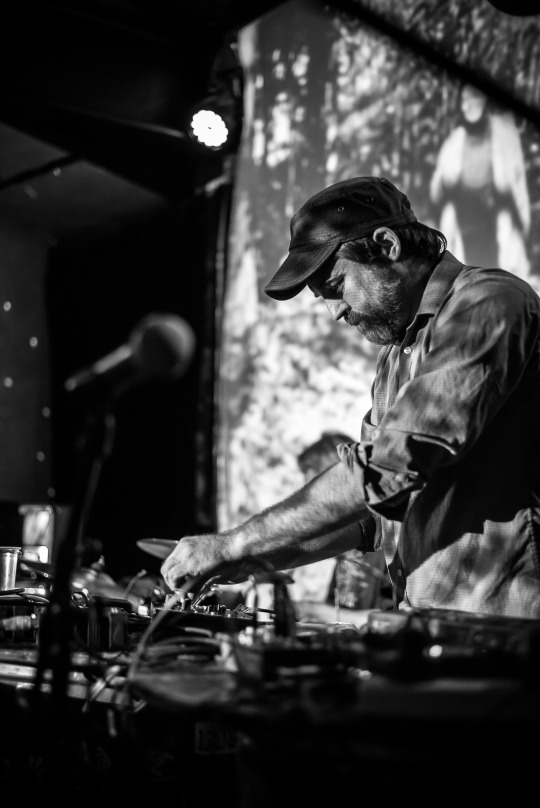
F.Ampism (UK)
F.Ampism on Paul Wilson, Brightonista käsin toimiva muusikko. Tekemisensä raaka-aineina hän käyttää sampleja, syntetisaattoreita ja muita sähköisiä äänilähteitä, löydettyjä ääniä ja joskus jopa soittimia; näiden avulla hän luo äänikollaaseja. Hänen musiikkiaan on julkaistu eri levy-yhtiöillä, joista mainittakoon Ikuisuus, Lal Lal Lal, Chocolate Monk ja Giant Tank. Soolotyönsä ohella hän on tehnyt yhteistyötä mm. Dylan Nyoukiksen ja Fritz Welchin kanssa, ja hän soittaa kahdessa kokoonpanossa, Triple Heater -duossa ja "gonzo free-jazz" -yhtyeessä Bolide.
+
F.Ampism is Paul Wilson, a musician based in Brighton ,UK. He uses samples, synths, electronics, found sound and sometimes even musical instruments to create sound collage.
His music has been released by Ikuisuus, Lal Lal Lal, Chocolate Monk, Giant Tank and various others. He has collaborated with Dylan Nyoukis and Fritz Welch among others, and plays in the duo Triple Heater with Ezio Piermattei (Italy) and in the "gonzo free-jazz" band Bolide.
www.ampism.com

Arttu Partinen
Arttu Partinen on tehnyt musiikkia yli viisitoista vuotta, Himera-festivaalin keikka on osa hänen 40-vuotisjuhlakiertuettaan. Aktiivisen kotimaassa ja ulkomailla esiintymisen lisäksi hän on osana Mental Alaska -kollektiivia tuonut valtavan määrän kokeellisen musiikin tekijöitä Suomeen ja rohkaissut ihmisiä aloittamaan musiikin tekemisen ja tapahtumien järjestämisen.
Soolona esiintyessään hänet on usein tunnettu nimellä Amon Düde, mutta viime aikoina hän on esiintynyt enimmäkseen omalla nimellään. Partisen keikat koostuvat nopeista kollaaseista, dynaamisen äänen ja slapstick-eleiden yhdistelmistä. Teostensa äänet hän koostaa mm. löydetyiltä kaseteilta, omista äänistyksistään, maailmanmusiikkikaseteilta, luonnon ja ihmisten äänistä sekä digitaalisista lyömäsoittimista. Jokainen esiintyminen saattaa päätyä osasiksi seuraavaa varten. Näin hän tavallaan luo aina uudelleen oman elämänsä tarinaa käsittelemällä, kasaamalla ja kerrostamalla omia nauhoituksiaan. Samalla hän tutkii Walkman-arsenaalinsa avulla luhistumaisillaan olevan tekniikan äänimaisemaa.
Soolotuotannon lisäksi Partinen on osa mm. kokoonpanoja Avarus, Hockey Night ja Hetero Skeleton. Maaliskuussa 2017 ilmestyy eponyymi 7"julkaisu "Arttu Partinen" (Ikuisuus/Artsy)
+
Arttu Partinen has made music for more than fifteen years. The Himera festival performance is part of his 40th birthday tour. In addition to actively performing at home and abroad, he has brought a great amount of experimental music makers to Finland as part of the Mental Alaska collective and encouraged many people to start making music and arrange music events.
His solo performances has usually been under the Amon Düde moniker, but lately mostly under his own name. Partinens performances are made up of fast-paced collages, a combination of dynamic sound and slapstick gestures. He gathers the sounds from found tapes, his own recordings, world music tapes, nature and human sounds as well as digital percussion. Every performance may end up as a part of the next one. In this way, he creates his own life story over and over, processing and layering his own recordings anew. nauhoituksiaan. With his Walkman arsenal he simultaneously explores the soundscape of technology in decay.
Partinen is also a part of ensembles such as Avarus, Hockey Night and Hetero Skeleton. The eponym 7" EP “Arttu Partinen" is realeased in March 2017 (Ikuisuus/Artsy).
https://soundcloud.com/arttu-partinen/artsyseiskateaser
https://avarus.bandcamp.com/releases
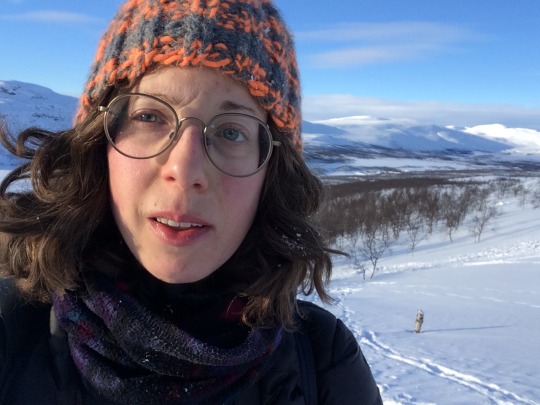
Leah Beeferman (US)
Leah Beeferman on new yorkilainen taiteilija, joka viettää parhaillaan puolen vuoden työjaksoa Suomessa. Hän työskentelee digitaalisen ja valokuvaukseen liittyvän kuvan tekemisen, videon ja äänen parissa — hänen erityisiä kiinnostuksen kohteitaan ovat luonnon, abstraktion, havaitsemisen ja nykyfysiikan väliset suhteet.
+
Leah Beeferman is an artist from New York, in Finland for half a year. She works with digital and photographic image-making, video, and sound — and is interested in the relationships between nature, abstraction, perception, and contemporary physics.
http://www.leahbeeferman.com/
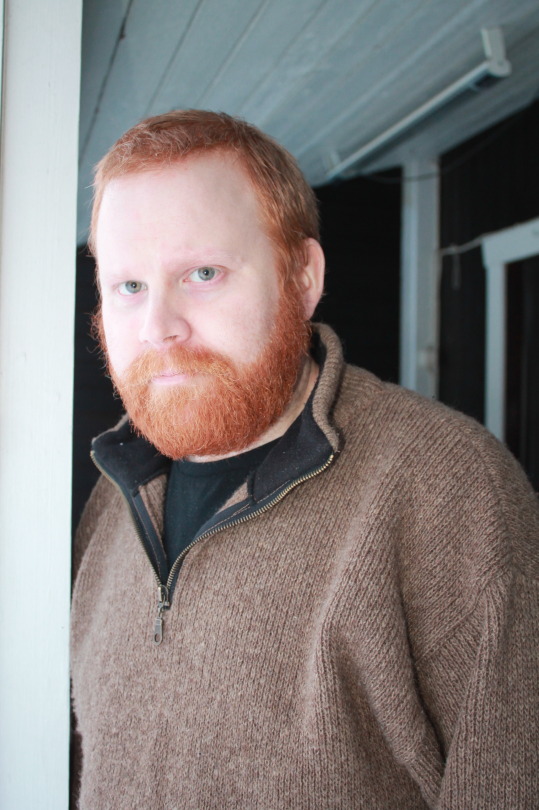
Juha-Matti Hynynen
Juha-Matti Hynynen (s. 1980) on siuntiolainen taiteilija. Hän on valmistunut Turun ammattikorkeakoulusta kuvataiteilijaksi vuonna 2005 kuvanveiston linjalta. Hänen työnsä ovat esinekoosteita vanhoista kuvista ja tavaroista, kuriositeeteista. Esineet ovat sanoja, joista Juha-Matti rakentaa kolmiulotteisia runoja ja tarinoita. Hän sanoo pyrkivänsä löytämään esineistä niiden hengen ja luomaan niiden ympärille maailman, jossa hänen on taiteilijana hyvä olla.
+
Juha-Matti Hynynen (b. 1980) is an artist from Siuntio. He has graduated as a sculptor from the Turku Polytechnic in 2005. His works are assembled from old photos and objects, curiosities. The objects are words from which Juha-Matti constructs three-dimensional poems and stories. He says that as an artist he attempts to find the spirit within the objects and create around them a world that he can inhabit and feel good in.
0 notes
Text

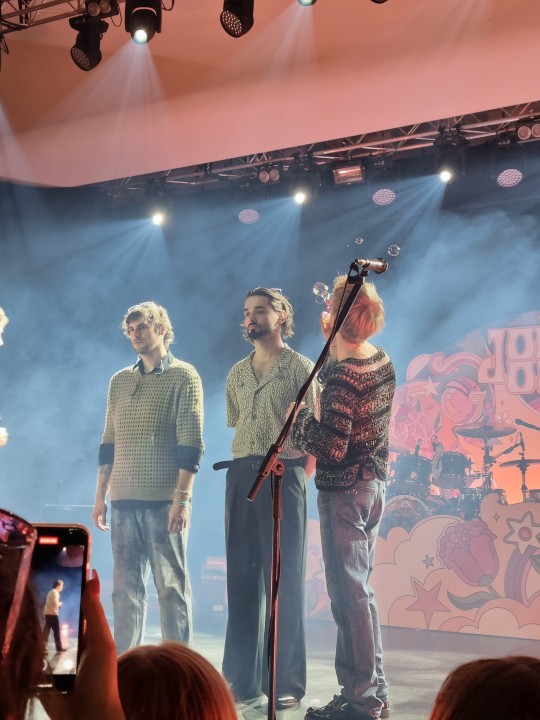

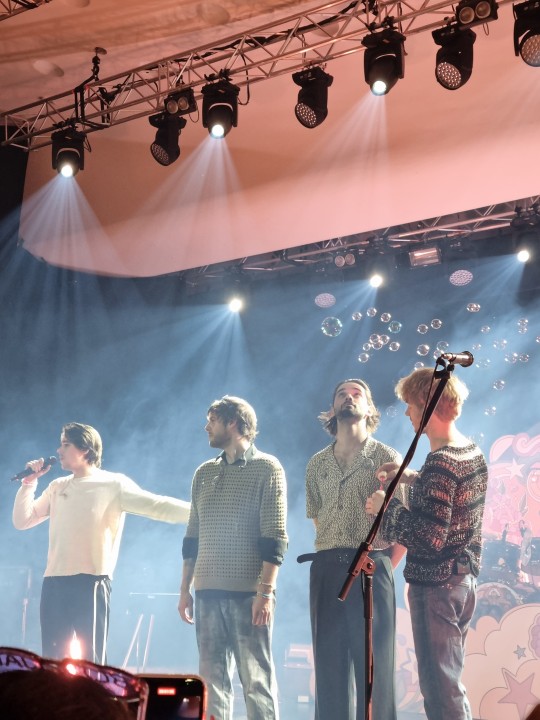


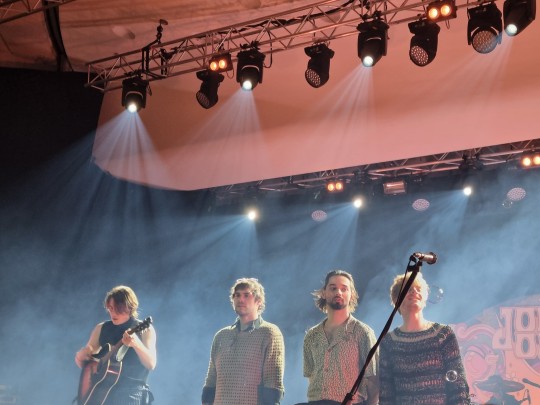
Jure being a cat blowing bubbles and other sheenanigans during Novi Val at House of Culture, Helsinki 3.3 2024
#this is pretty much all the pictures i have from the second show if not counting some random ones where i tried to record#i really like the chaos in some of these#jure maček#jan peteh#nace jordan#bojan cvjetićanin#kris guštin#joker out#jo see you soon tour 2024#joker out spring tour 2024#my gig#helsinki hoc 2#mine
58 notes
·
View notes
Text
Two days ago I arrived home from the last of the See You Soon tour dates I will be attending and wow it was such a ride I have been pretty much walking in and out of existence and longingly daydreaming all day. So here’s my experience at the different gigs.
Tldr; Helsinki one was me in the seats – cozy first concert and bit of warmup for both me and the band – and Hojan!!; Helsinki two had much more energy and good vibes yet strict security made it so a few people had to almost faint before we got offered water… also I missed Jere by one and a half hours; Malmö was the one were I kept winning and I am still in awe this day even happened; Gothenburg was great especially for interactions between the members of the band although I wasn’t keen on the queue location.
Helsinki 1+2
I have decided to put these two together since they were at the same place and because I am very late to write this.
I had seating tickets to the first show, so me and Anniina (@formulalakana) spend the day being käärijä city tourists in Vantaa. After that we went to Käbnb (I’d rented it for the weekend) and fanboyed some more over the apartment and wearing the bolero. Since the apartment was an hour away, we only just joined the queue right before opening of general entry at 5.50.
The show was great. If I am asked to describe it with one word, I’ll chose cozy which might seem like an odd word to use about a Joker Out show. In my defense I had been up since 4 am and had a whole day behind me of getting excited over käärijä stuff (also since I was staying at käbnb). I loved hearing the new songs (Sta Bih Ja and Bluza) live together with seeing Hojan join the encore. I was glad we got Metulji so we could use the cute little butterflies we got from people at the queue to hold up in the air (it was really quite pretty from the back). I remember thinking how Jan must’ve been warm in his furcoat on stage and that I appreciated the little hints back to Stozice with the outfits like Nace’s leg chain.
Tbh I mostly just took this gig as a warmup where I filmed lots of the songs and took in the vibe, now that I couldn’t really jump around myself. The guys might have needed time to get back into touring because I talked with some people yesterday that agreed that the band had been great if a little held back on the first day.
On the second day I joined the queue around 10.10. It was amazing meeting up with old and new faces. Everybody got so excited about being gifted stickers that I ran out a few hours before lining up for the queue started. In turn I got so many nice wristbands as well I think I managed to beat the record of most bracelets gifted to me in a day which had been Berlin previously.
Today’s vibe was completely different; there was way more energy from the stage and from the crowd, the latter possibly because I was in the pit this time, four rows from the stage. I had decided to wear my häärijä suit for the occasion together with a little Danish flag that I kept waving in the air. I was with a strong Nace girlie so we had placed ourselves by Nace and Jan. She got a few genuine smiles and nods from the bassist.
Katrina was a good opening song and while I haven’t listened much to Galaxy of Me/Behind Those Eyes/Schlager since hearing it live I remember enjoying it quite nicely. Padam was gorgeous as a piano ballad! Nace looked adorable in his glasses and holed blouse, and I enjoyed Kris’ outfit a lot. However the pit did get quite hot at one point so a few people around seemed to be feint and the security guards didn’t want to give us water until we directly cried out for help then they suddenly wanted to give us all the water we could muster. Other than that the experience was great! I felt my stomach drop hard at one point and I realized it was because Bojan’s eyes were locked with mine for solid five seconds. I loved that we got Kris bullied into singing NVGOT for the encore.
I felt almost as a celebrity when people complemented my häärijä cosplay (or Dojan as somebody later called me; the Danish Hojan). I even got asked for an autograph where I had to break it to them that I wasn’t the “real deal” yet they still wanted the autographs for the funsies.
After the concert a good portion of people collected outside by the tourbus and played Everybody’s Waiting over and over. I joined for a time yet felt ambivalent about it all given I could imagine how intimidating it must be for the band seeing such a big group of people standing around like this. Anniina suggested we catch the last bus home around 0.30 and I agreed it was probably for the best. The bus at the Pasilla station didn’t want to open its doors for me although I stood with my face more or less on the door window so I had to wait for another less convenient bus that left me gliding and sliding on ice home for 1,5 km. That together with learning the next day that had I waited one and a half hours more I could’ve met not only Bojan and Jan, but Jere soured my mood a bit I must admit. I bought myself the 3xl käärijä shirt that was offered as a nightgown and went to gift Jere his little gift (Helsinki sticker and Bojere keychain) but got lost so I had to hand in the letter at the Warner Bros Studios instead of the käärijä fanmail box – for this reason I am not sure if Jere will ever get it sadly.
All in all some great concerts although what I think I mostly will remember this trip for was the amount of käärijä related firsts that I got (first time seeing the mural, first time tasting oddly good, first time trying on the bolero, you name it) together with the joker out firsts as well (first concert, first time hearing the new songs etc. etc.)
Trinkets from the Helsinki shows including doodle from @ya-boi-joule , wrapping paper @formulalakana was so kind to buy and safe for me, merch and the many lovely bracelets and stickers :D Not shown here are the cool sparklative pin that @hazzybat made (and the cute kangaroo keychain I also got from Haz) together with the homemade Bojan earring I've basically worn nonstop since xD

Malmö
I had thought about adding the two Sweden shows together but honestly the vibes were too different for me to do so.
I had gotten early entry to Malmö, so I had probably put way too much weight on making this gig the best of the bunch. For this reason, I woke up at 4 so I could be at the venue around 9. I was met by the oddest and most chill queue I have ever seen. By now point were we more than 15-20 people present before the line was formed at 5. I had been fairly certain that the only of my many goals (x) I would be able to accomplish would be gifting all my stickers away but spoilers; that didn’t happen.
At soundcheck I managed to get second row in the middle between Bojan and Kris (very strategic of me since two of my goals were related to Bojan and Kris respectfully). Having told quite a few people in the queue about my dream of getting Bojan to see my sign I had so many eyes on me cheering me on that I didn’t hesitate to throw my silly sign in the air. Bojan hesitated even less and agreed immediately (I might do another post about the whole experience with the tattoo when I have it done). In return I gave him the pencilcase full of gift and he looked at it confused until he read the little sign and said with a smile ‘gifts :D’. So that was two of the goals I had been so scared I wouldn’t in a million years be able to accomplish and the show hadn’t even started. When he later got down to slide his hand over ours I ended up being the awkward boy in the room going for a handshake (don’t know what I was thinking tbh) so instead Bojan held his hand in mind so gently for like a minute and locked eyes with me. Safe to say I was on cloud nine after that soundcheck.
The energy that had been great in Helsinki day 2 was somehow even better in Malmö! The band was fully on and so were we in the crowd. Jure wore what looked like a simplified Stozice shirt aka just a harness with a diamond down his chest. Kris and Bojan complimented each other, one wearing blue pants and the other a blue shirt and then the other way around with white shirt and white pants.
We started out strong with Sunny Side of London which I honestly hadn’t expected given I hadn’t heard it in Helsinki at all (and I haven’t looked too much into the setlist of the other dates). But that was not all: We got the demoni scream!! And NVGOT!! Padam was gorgeous as a piano ballad yet again. Me and Bojan held eye contact while screaming the bridge to Bluza together. So many different versions of Umazane Misli was sung including a version from both the people next to me that I had bonded with in the queue!! (that made me go into proud dad mode and gave me tons of dopamine seeing them win as well). We even got Bojan rapping the chorus himself from the middle of the crowd!! Fittingly he was given a crown by a fan immediately after. My last piece of Bojan eye contact came during Novi Val where I have on video him looking for five seconds at my phone and tapping his mic to his chest which threw me off for a bit rushing to make him a heart back.
Honestly this whole show was peak to me already before leaving the venue. Yet as I’d been the whole day, I was a man with a mission and now the mission was to gift away the last stickers. This quest let me to talk to Hearts, the supporting act (these guys were chill and cool as well) together with accidentally be close by when Kiki came out with two free setlists where I then ran to get one of them. What I remember most vividly was everybody I showed the setlist too being annoyed at ASTP being replaced by Sta Bih Jah and fair.
We were a small group of people that met up afterwards just to chill. At this point I didn’t even know where the tour bus was, so I didn’t expect to see the guys at all. Yet at some point one pointed out Jan walking by and me high on everything that had already happened had no shame and shouted ‘great concert :D’ at him where his response was a ‘thank you :D’ back.
It turned out that not 20 minutes later I spied Bojan in the corner of my eye down the hill where we were standing and wanting to thank him for the tattoo I went down there. I gave him a tight hug shaking a bit from everything and we ‘are you’ed each other for what felt like 30 seconds to a minute. He told me that he recognized me from Helsinki in the yellow suit and at that point I was ready to melt then and there. Bojan was just so easy and lovely to talk to I can see why Jere and so many others fall for him.
Going back up to the rest of the folk we noticed Jan and Kris hanging out, but Kris had to go when I got there. Nace stayed and we got a long talk about his turtles which meant lots of new turtle lore. I loved feeling how great of a turtle dad he is from the way he was talking about them, and I felt connected to him in the way he too speaks a lot with his hands. After Nace Jan turned up to speak to us yet I had a bit of a harder time talking to him maybe because we both can be a bit distracted (me mostly by Jure standing in a colourful sweater and smoking by the tour bus). He agreed to us taking turns taking pictures and getting hugs which was nice.
On my way home from the venue I had to record all my experiences which turned into me babbling only semi sensical at a camera for almost 3 minutes letting my legs show me the way home. I was surprised to find I didn’t get lost. I was not at all surprised to see I was close to tears in the video footage.
Trinkets from Malmö including my sign and Bojan's handwriting, the setlist and more <3
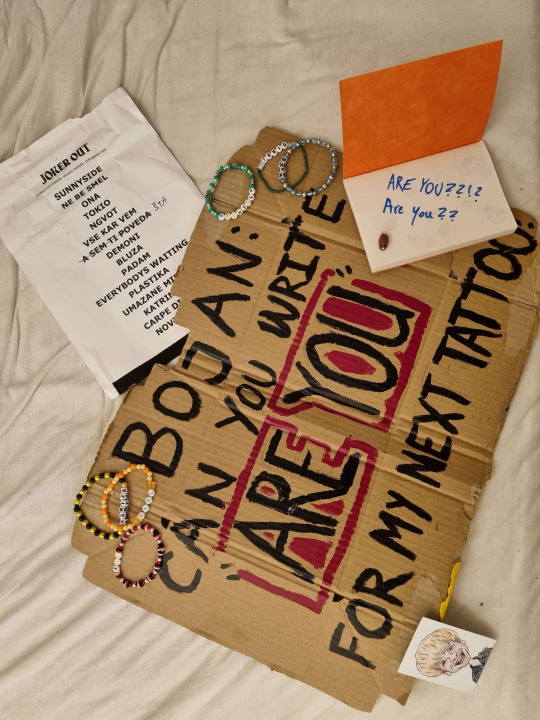
Gothenburg
I only arrived at 2 o’clock for the queue given the bus I’d been able to get from Malmö. It was a bit colder than yesterday and the queuing space way less cozy being a parking lot with the bus behind a caged fence and us just outside the fence compared to the nice little park with the tourbus out of sight in Malmö. I did manage to get a wave from a person I am pretty sure was Bojan (my stomach dropped like it did in Helsinki as well so I guess this is how I recognize Bojan from now on xD).
I began doodle a bit for people and getting back into the queue vibe when I noticed the time; I had to go throw my stuff at the hotel, so I had a place to sleep and because the venue had a bag ban. I managed to get lost and curse myself for not paying extra for a closer hotel when walking around the construction heavy central station. It turned out the hotel I’d booked was a boat which I find cool (and fitting given the whole titanic thing with Bojere).
Being lost I ended up going on a tiny side quest to ICA and buy the käärijä youghurt. It tasted pretty okay (I ate it in the queue later)! I prefer dreamy lemon tho (my breakfast in Helsinki). I arrived in the nick of time because just 20 minutes later the lines were formed. Now being forced to stand close to the fence we managed to catch glimpses of the fan running back and forth (especially Jure) but none of us said anything. One person I was with told me about Jure being cornered by a fan and forced to flee into the tourbus only to be followed and to be honest that story was the cherry on cake for me; the rest of the night I found myself being in overempathetic mode to the point of later masking and stepping away when being afraid of invading somebody’s space.
The concert was great especially when it comes to gifts given to the guys and the interactions between the guys as well. I especially loved Jance’s dance during Umazane Misli (that today were mostly Swedish versions) and Bojan gently caressing Kris’ cheek to get his attention. Jure also got some action going on with the two guitarists joining in on both sides of the drumset and Bojan vibing when Bluza was playing. I really enjoyed Kris and Jan in yellow especially Kris with blondes down his arms. Everybody got tons of sunglasses, Jan got a Teletubbies hairband, Kris a crown (he threw off real fast after just one song) and Jure got a few bracelets he gently took from the hands of the people in the crowd during Novi Val (that was the one time he seemed to get eye contact with us at all – I still felt very bad).
The setlist wasn’t too different from Malmö but with Gola replacing SSOL (nice full circle moment for me since Gola also opened my first ever JO show and the first on the whole tour aka Helsinki 1), Metulji replacing Padam, NVGOT being skipped, and Katrina moved up the setlist (maybe there were more changes but that is what I recall). I seemed to have tons of eye contact yet again with the Bojan even more than the other three days combined. And that was despite being a bit farther away this time almost at the edge by Kris yet pretty close to the barricade (third row) all things considered. Once again, he gently held my hand. This time it happened during the show where he let his hand jump over a (tiny) sea of other hands to rest his in mind and he winked at me. I had to happy stim after that which is oddly not something I do a lot at shows. When Mira next to me was invited to do her choreography for UM on stage I got another rush of dopamine (Idk why I get these proud father feelings for people I’ve only just meant; I was just so happy for her).
We were a group that hung out by the venue afterwards; it was bigger than Malmö but smaller than Helsinki 2. Still big enough that my overly sensitive empathy today felt bad for being there. At the same time, I wanted to cool my nerves down after being boosted with all that dopamine. As time went on I also grew stubborn and didn’t want to repeat Helsinki 2 where I had moved home too early.
When it looked like we’d only wave at the bus today, Nace came out to the cage to say hi. At first, he seemed uncomfortable especially with how he tensed up laughing. He loosened up seeing the amazing Joker Out inspired jackets some fans had made and almost gave them both a heart attack asking for pictures of the jackets.
After that he came out to us on the other side of the fence, and we talked about the silliest topics like what signature picture pose each member have (sadly I forgot to ask about Nace’s own go to pose). I gave him a very rushed doodle of himself doing Jan’s pose (I had cold hands and wouldn’t risk him going away) and he got so genuinely excited for it my heart melted a bit.
Jan also joined yet only after Nace had gone and just before me and some others were on our way home, so we sneaked back again to chat. He was wearing his scarf as a hat so of course I had to draw and gift him a doodle like that. He too seemed genuinely happy for it. We gushed about the new songs and spread the ‘come to Denmark’ propaganda (we were two danes amongst others). Today I felt it was easier to talk to Jan. He was very nice and polite and open. We went away after Jan had said goodnight so I don’t know if any other of the guys came out to say hello. I couldn’t argue with my sense of being the crazy fan stepping over an invisible line anymore (even after dad Nace had told me that – like yesterday – he would not chose to come out and say hi if he felt uncomfortable so I shouldn’t worry … right before then saying the most people-pleaser thing like ‘I felt bad for you waiting in the cold’ so I don’t know how to interpret the two messages I got there. I guess Nace is right tho; he himself knows best what he is comfortable with and after all we were all nice and respectful).
Trinkets including the tour shirt (finally got it after three attempts) and the k youghurt
Fun fact about the blue flower bracelet: It was thrown to me by a crew member after Hearts' set - I didn't know what he had but I nodded to him when he asked with his eyes if somebody wanted the thing and so I was pleasantly surprised to see how pretty a bracelet it is. I have no idea who it was originally meant for x'D


#this turned loooooong OVO#should I have made it into three seperate posts? probably#did I do it - no x'D#so I don't mind if you don't end up reading it :'D#I will look through the pictures tomorrow hopefully so I can share more from gothenburg and the pictures of me with the boys :D#micahs thoughts#micahs foolery#my gig#helsinki hoc 1#helsinki hoc 2#malmö gig#gothenburg gig#göteborg gig#jo see you soon tour 2024#joker out spring tour 2024#sys tour 2024
16 notes
·
View notes
Text
March 30 2024
It has now been a week since I got my new tattoo and I gave it a name: Malme. It is a nod to all four Joker Out shows I watched in Helsinki (since I lived close to the Malmi train station) and Sweden (since one of the shows – my fave one - was In Malmö). I hadn’t expected to give my tattoos names like they are plushies. I don’t mind it tho. It is a funny little autistic flair. Hopefully I won’t end up collecting tattoos like I do plushies tho because oh boy that’ll be expensive!
#transgender#transmasc#nonbinary#body modifications#body modification tattoo#tattoo#sys tour 2024#jo see you soon tour 2024#joker out spring tour 2024#helsinki hoc 1#helsinki hoc 2#malmö gig#gothenburg gig#göteborg gig#my gig#late entry#entry#findingmicah
0 notes